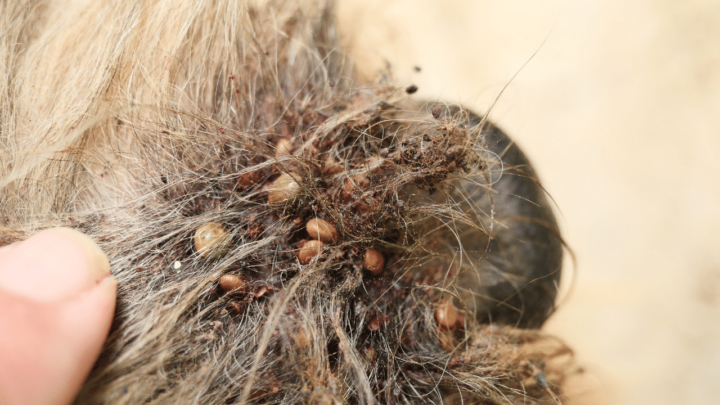What are bugs that look like ticks? Tick-like insects can cause serious harm to humans as they carry infections that are hazardous to us.
Get yourself checked following a bite. In addition, the bug must be sent to a laboratory for analysis. Tick-like insects can be completely innocuous, so it’s best to know what you’re against.
Ticks may be a real seasonal catastrophe with their voracious appetite for blood! People frequently confuse these parasites with a variety of other insects that are significantly less deadly but resemble ticks in look.
To avoid undue concern, read the following article, which details the most commonly misidentified insects that are not ticked.
40 Bugs That Look Like Ticks
- Bed bug
- Harlequin cabbage bug
- Poplar Weevils
- Brown marmorated stink bug
- Drugstore beetles
- Head louse bug
- The White-Margined Burrower
- Aphids
- Common weevil bug
- Ashplant bug
- Booklice bug
- Swallow bug
- Carpet beetles
- Spider Beetle
- Cockroach Nymphs
- Deer bloodsucker
- Bat Bug
- Chigger
- Spider
- Skin Beetle
- Spider Mites
- Clover mites
- Ebony Bugs
- Fleas
- Mealybugs
- Pseudoscorpions
- Smooth spider beetle
- Black Bean Bugs
- Whirligig Beetle
- Earwigs
- Silverfish
- Viburnum Beetle
- Cucumber Beetle
- Termites
- Cricket
- Squash Bug
- Chinch Bug
- Sowbugs
- Whiteflies
- Kissing Bug
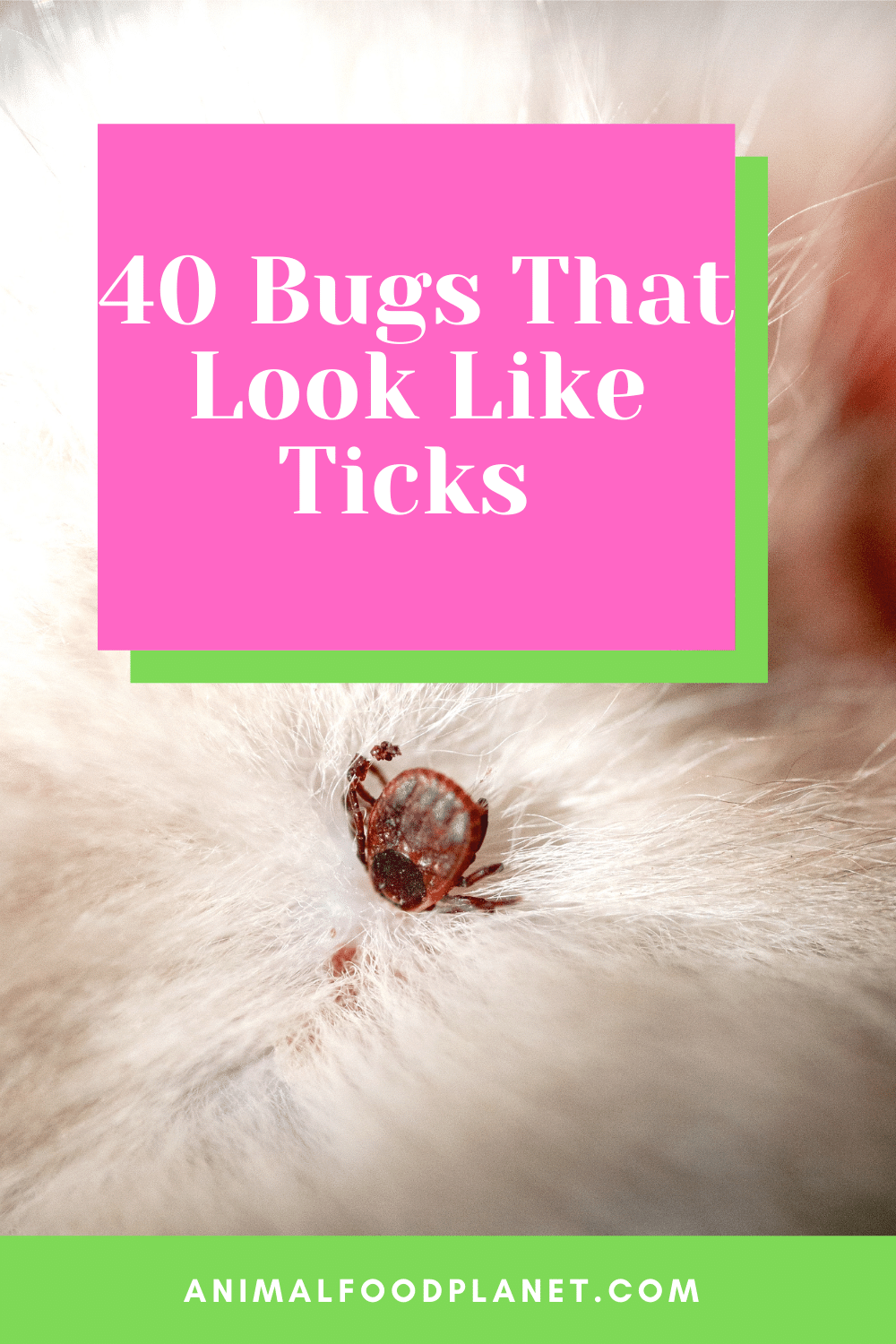
Bugs That Look Like Ticks
1. Bed bug
There are several similarities between bed bugs and ticks. The leg number distinguishes ticks from bugs; ticks have eight, and bed bugs possess six legs.
Furthermore, unlike bloodsuckers who favor shaded and green outside hiding places, bed bugs like to stay indoors.
The oval shape of the bed bug is said to resemble that of a cockroach, whereas the tick has a rounder appearance. Ticks, after all, are related to spiders and belong to almost the same arachnid group.
- Scientific Name: Cimex lectularius
- Size: An apple seed 3/16 – 1/4 inch (5-7 mm) long
- Color: They fluctuate in hue from practically white to brown; however, after eating, they become rusty red
- Shape: These bugs are normally flat and oval; however, once they get bloated with blood, they take on a pill-like appearance
- Body: Have six legs, a head, chest, and an abdomen
- Antennae and wings: Although there are wing pads, there are not fully grown or functional wings
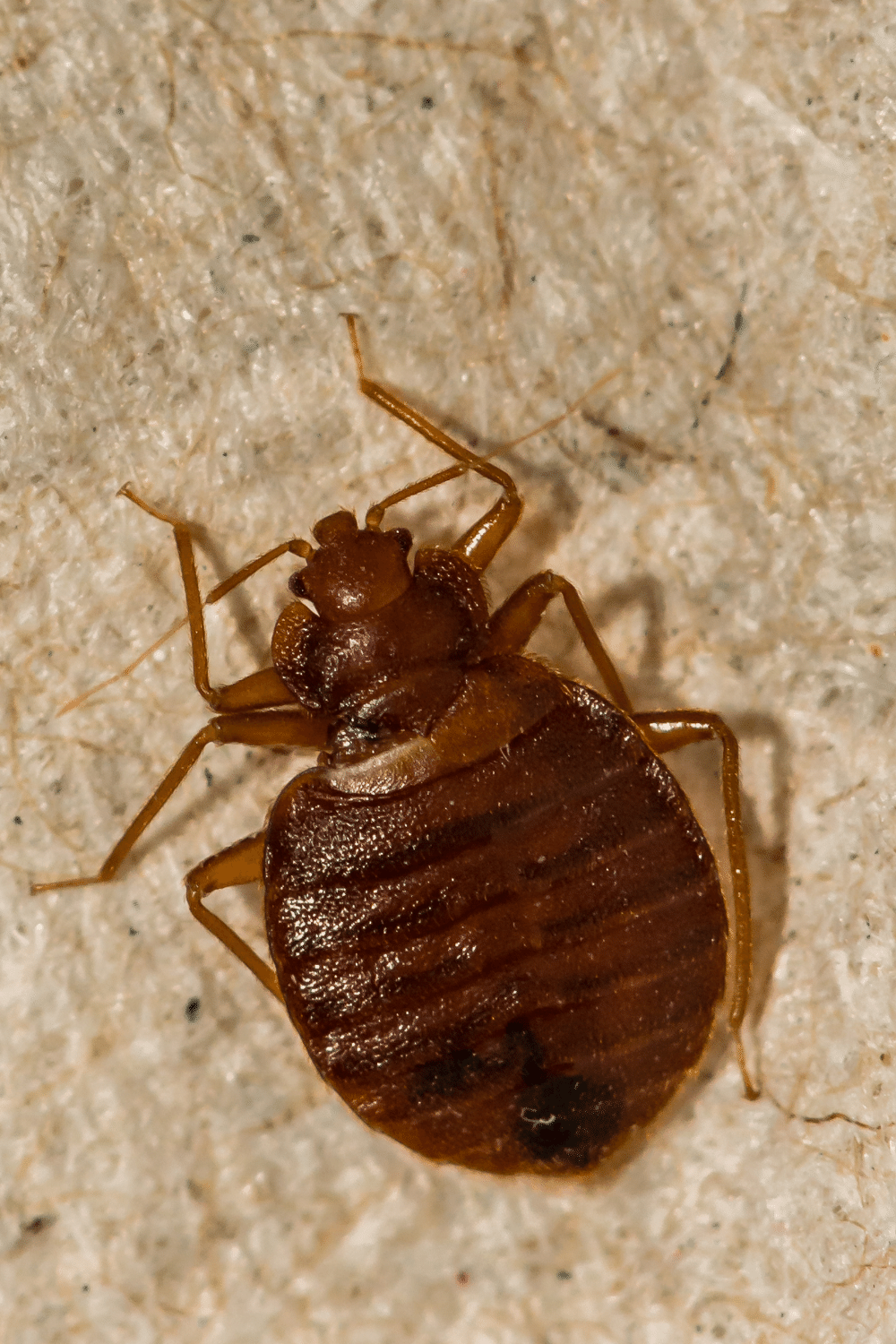
2. Harlequin cabbage bug
If you have got a backyard cabbage crop, there’s a strong possibility you’ll see this black-and-orange animal during the spring and early summer.
It’s a harlequin cabbage bug, and although it’s attractive to see, it can be a headache to cope with the garden.
If you come across this bug and have a craving for cabbage, specialists recommend cutting your lawn frequently throughout the spring and summer to prevent the infestation.
- Scientific Name: Murgantia histrionica
- Size: 0.5 inch (1.25 cm) long
- Color: Brilliantly colored with yellow, red, and black
- Shape: Bug is shield-shaped
- Legs: Have black legs
- Antennae and wings: Short, segmented antennae
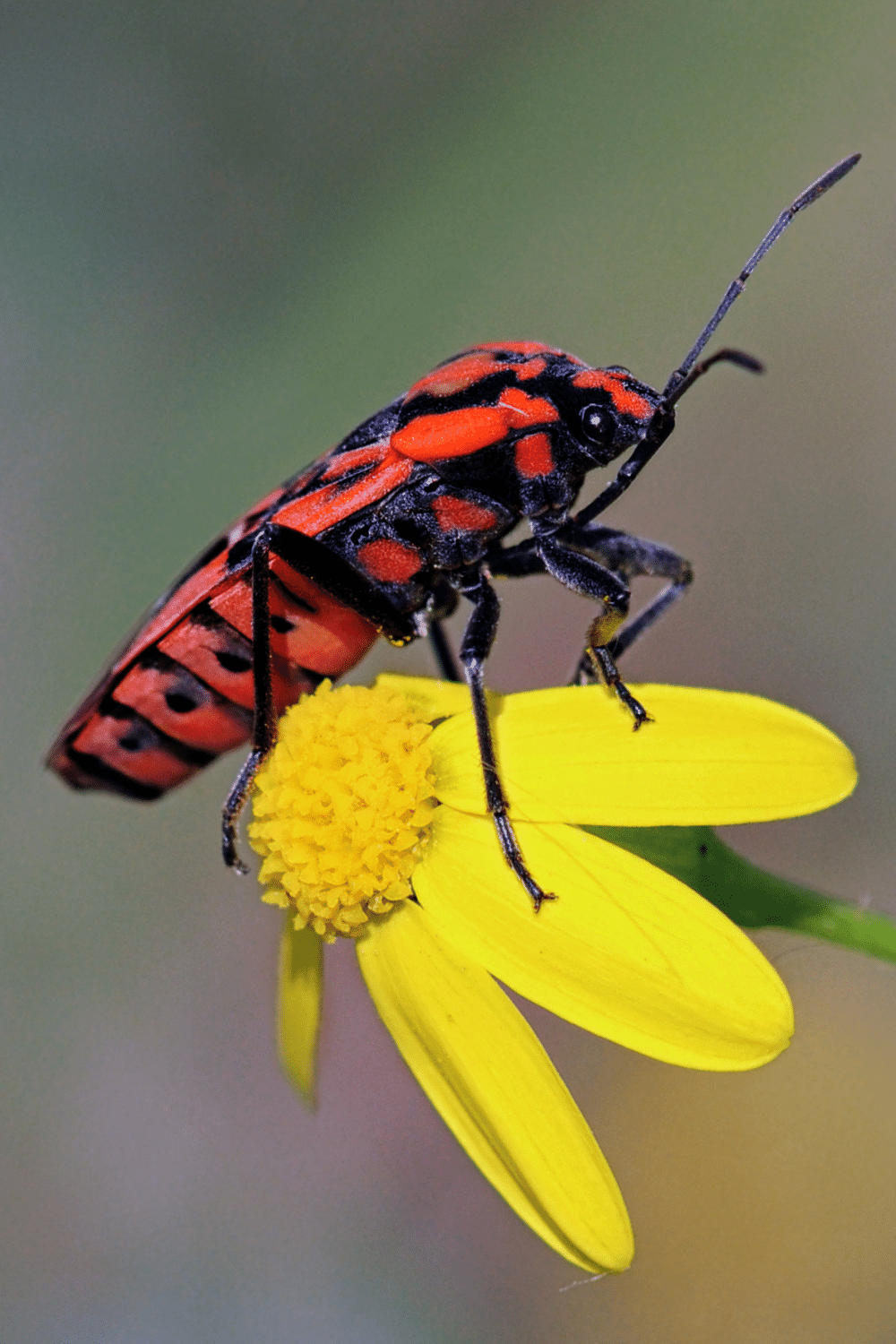
3. Poplar Weevils
You have a poplar weevil invasion in your backyard if you notice dispersed lesions in your poplar plants.
They are serious tree parasites because they damage the limbs, which can result in tree mortality. They can fly, unlike ticks, and they rarely bite or prey on humans’ blood.
- Scientific Name: Odontopus calceatus
- Size: Reach about 3/16-inch (0.5 cm) long
- Color: Usually black or dark brown
- Shape: Small beetles that have noticeable snouts are often lightbulb- or pear-shaped
- Body: Six legs, round body, and extended mouthpieces
- Antennae and wings: Two short antennae
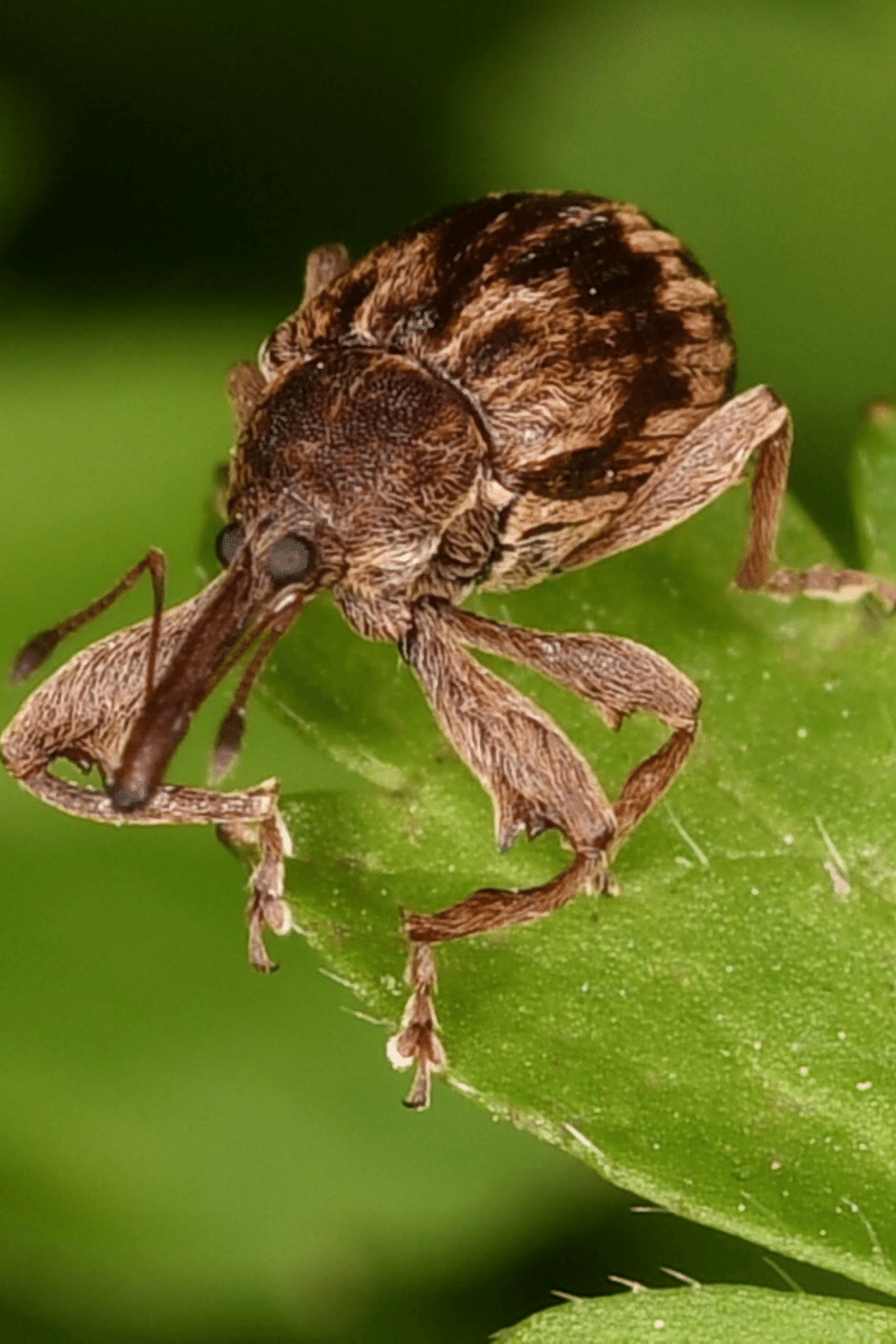
4. Brown Marmorated Stink Bug
The brown marmorated stink bug is a Korean, Japanese, Taiwanese, and Chinese invading alien bug. This nasty brown insect, albeit tick-like in size and color, can be distinguished from ticks by its six legs and capacity to fly.
It’s essentially a stink bomb on the move. Like the harlequin bug, the marmorated stink insect is a genuine pain whenever it relates to plants and crops.
- Scientific Name: Halyomorpha halys
- Size: 0.6 to 0.7 inches (1.5-1.8 cm) long
- Color: Mottled brown
- Shape: Shield-shaped and has a smooth rounded shoulder
- Legs: Six legs
- Antennae and wings: Antenna has a distinctive light-colored band around it and has two pairs of wings that arise from its thorax
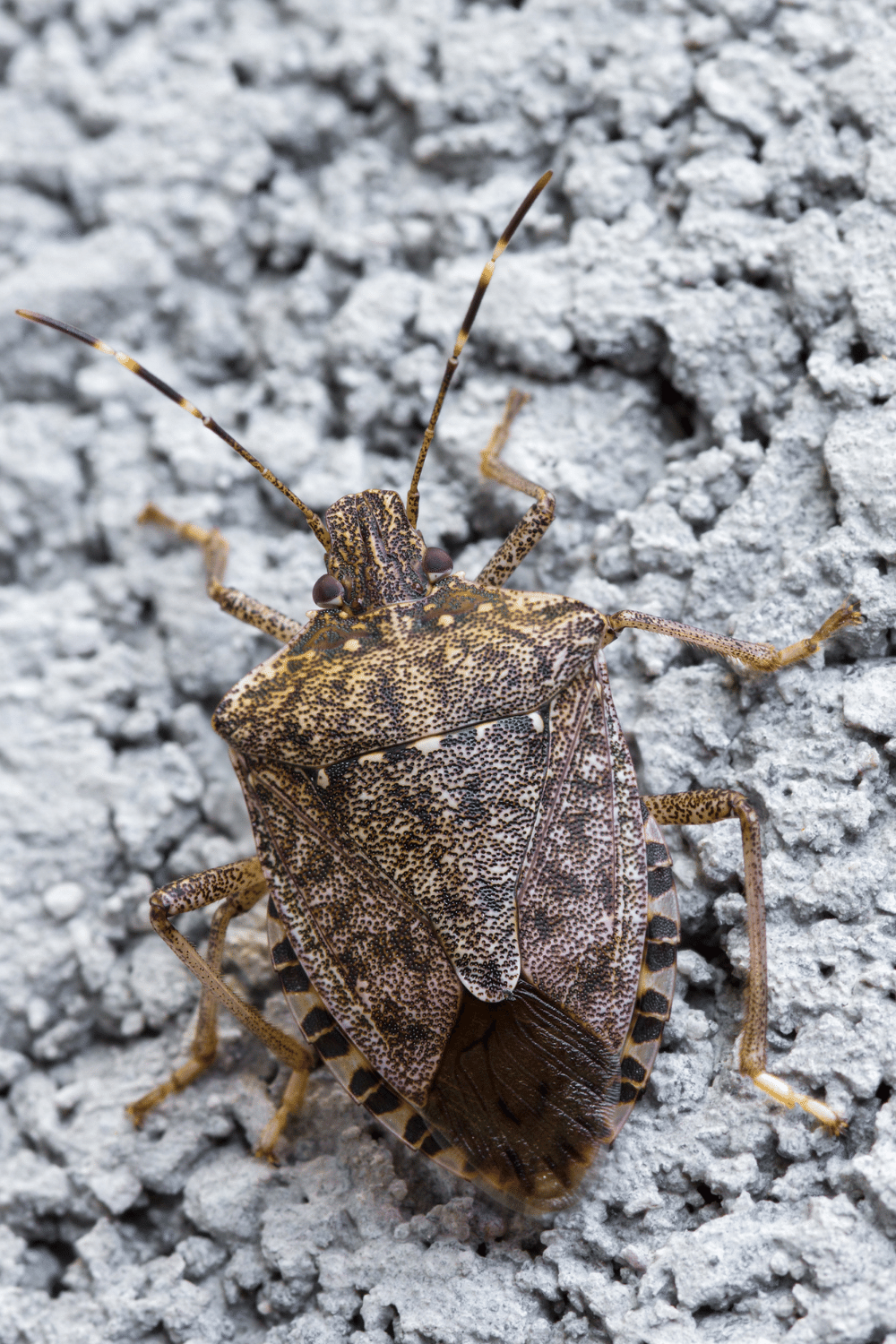
5. Drugstore beetles
These pests are a serious threat in the house, particularly in the pantry and kitchens. They can go for many days with no food, but once they figure out where all the grains, cereals, and bread are kept, they turn a shambles.
Apart from that, they are drawn to the sunlight. Their round bodies give them the appearance of ticks. They normally have wings but are unable to fly, and their outer shells are brown and rigid.
- Scientific Name: Stegobium paniceum
- Size: 1/10 to 1/7 inch (2.25-3.5 mm) long
- Color: Tones of red and brown
- Shape: Cylinder-shaped
- Head: They have a brown head that is bent downward but doesn’t result in a distinct humpbacked appearance
- Antennae and wings: uniformly serrate (saw-like) antennae and smooth wing covers (elytra)
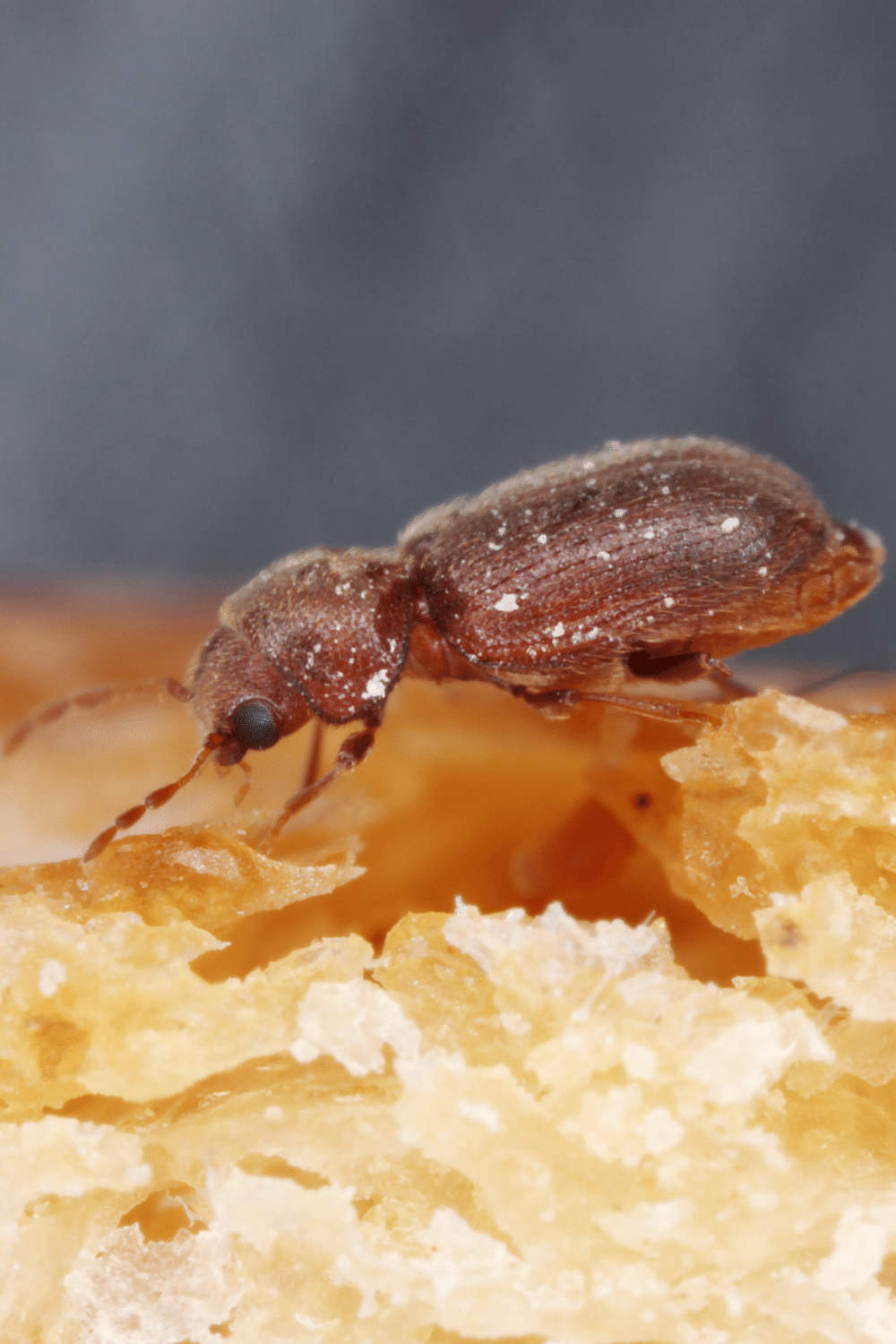
6. Head Louse Bug
Head lice are little bugs that feast on the blood of humans. Head lice infestations are more common in kids and are caused by the straight spread of lice through one person’s hair to someone else’s hair.
A head lice infection isn’t a symptom of bad hygiene or a filthy living situation. Head lice do not propagate viral or bacterial infections.
- Scientific Name: Pediculus humanus capitis
- Size: Adult is about 2–3 millimeters (mm) in length
- Color: Is tan to grayish-white in color
- Shape: Oval-shaped and very small
- Legs: No legs for hopping; hence use the claws on their legs to move
- Antennae and wings: A pair of antennae with five segments and no wings
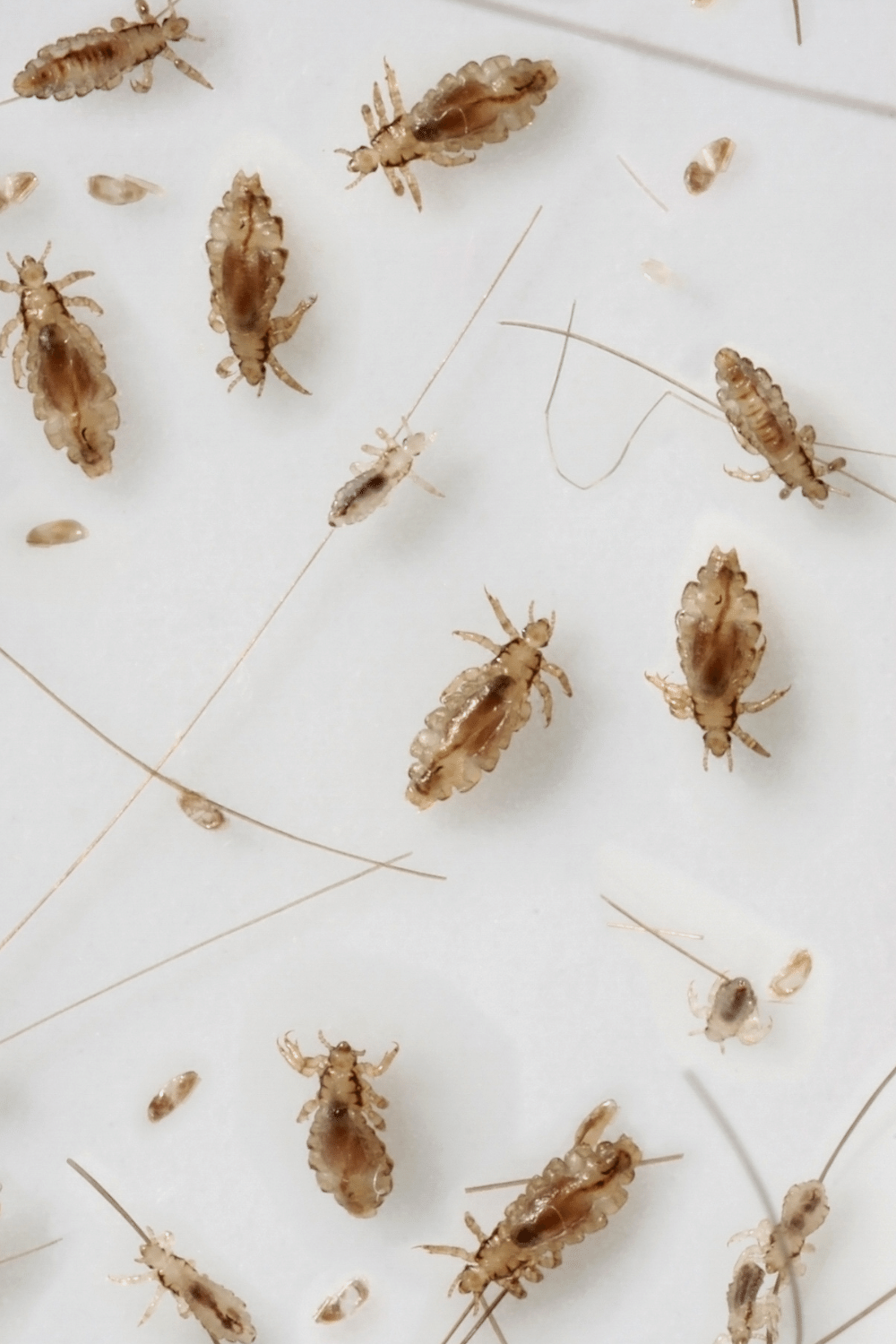
7. The White-Margined Burrower
Unlike some of the other Cydnids, it eats seeds. Henbit, violet deadnettle, various mint-related species, and Lamb’s ear are among the plant seeds they adore.
Burrower Bugs with white margins appear to be drawn to lights. They move quickly on a plant and are frequently seen in huge groups.
- Scientific Name: Sehirus cinctus
- Size: About ¼ inch long
- Color: Black with white borders
- Legs: Six legs
- Antennae: Black antenna with 4 segments
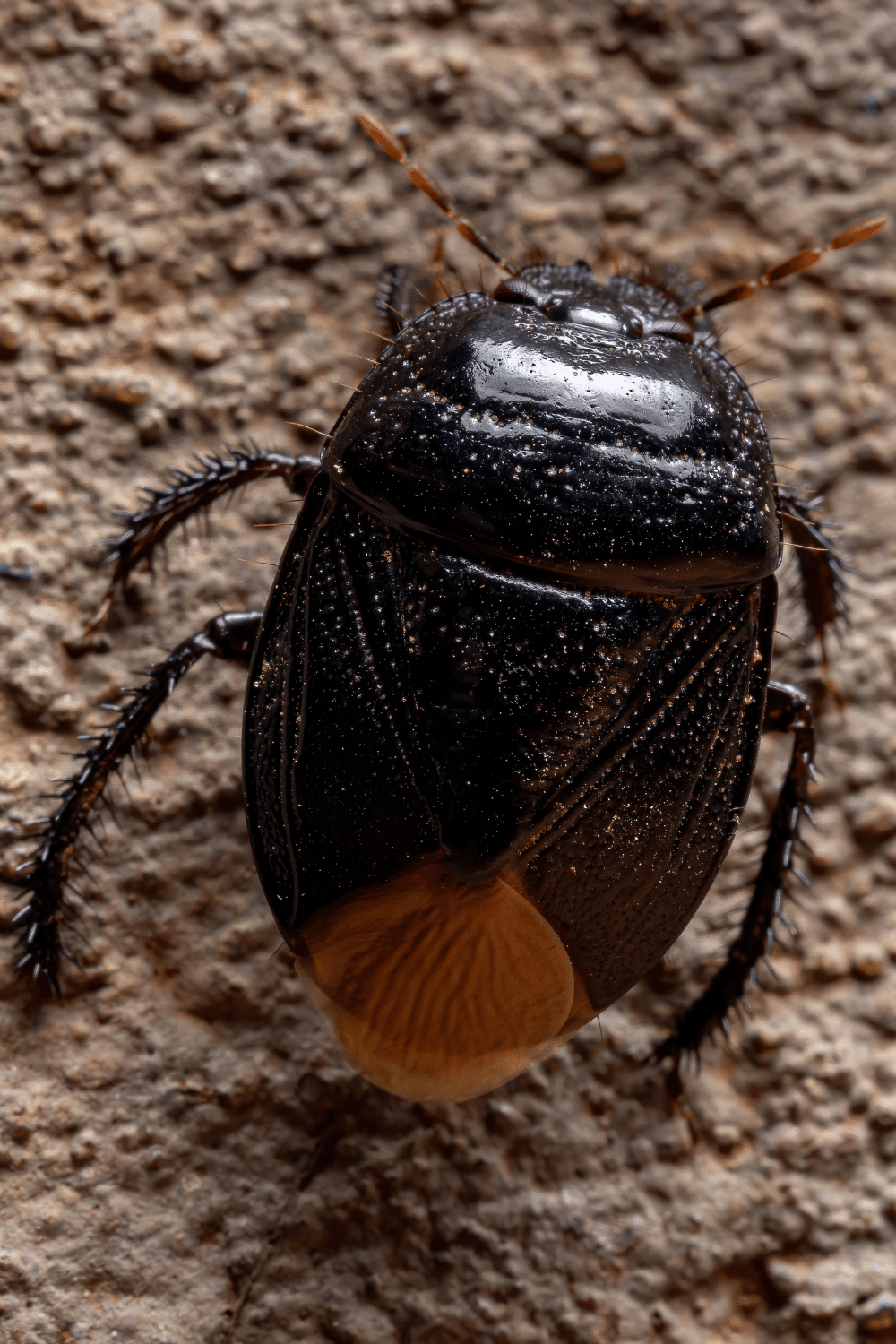
8. Aphids
You have certainly seen these little but unpleasant insects if you grow or raise crops! Aphids are sap-sucking insects, which means they are harmless to humans.
However, these insects impose a major threat whenever it comes to plants.
Aphids come in over 500 different species, and each one can create a variety of issues in plants and crops, including diminished strength, deformed growth, and virus transfer.
Aphids can cause mold in some cases. These bugs are typically productive from spring through late summer on outdoor plants, while they can survive all year on interior greens.
- Scientific Name: Aphidoidea
- Size: 1/16- to 1/8-inch-long (2-4 mm)
- Color: They can range in color from black, green, yellow, red, gray, or brown
- Shape: Soft-bodied and pear-shaped
- Legs: Six legs, one on each thorax
- Antennae and wings: Antennas are composed of three muscularized articulated true segments, usually wingless but can produce winged youngs
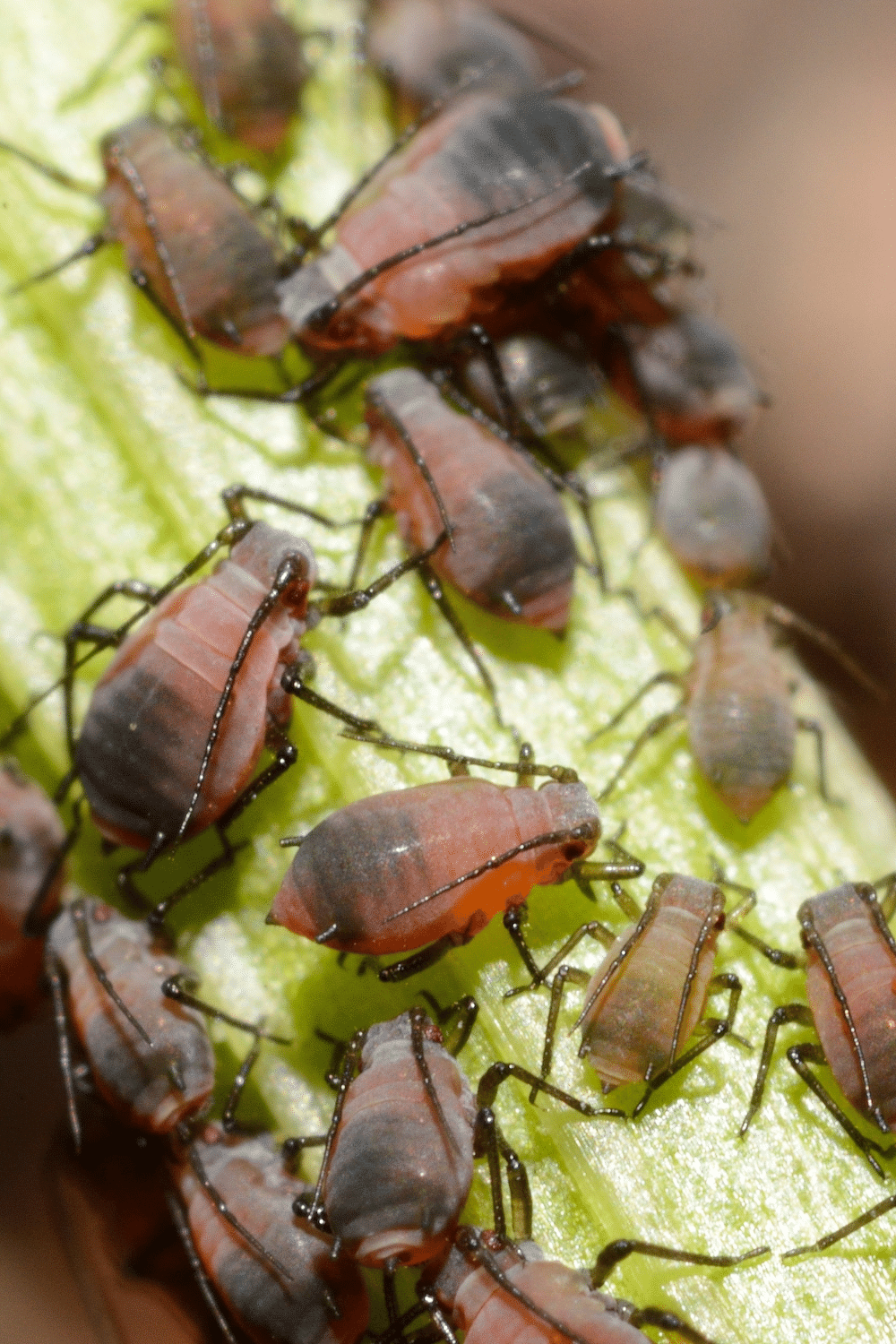
9. Common Weevil Bug
It’s difficult to confuse this one with a tick! The elongated snout of the ordinary weevil, which has two antennas on its end, gives it a far more extended form. Six legs indicate that it is an insect;
however, some kinds have wings and can fly, while ticks do not.
Weevils come in a variety of colors, ranging from dusty grey to brown, but they all have the appearance of an insect.
- Scientific Name: Curculionoidea
- Size: Less than 0.25 inches (6 mm) in length, although the largest exceed 3 inches (80 mm)
- Color: Dark-colored, brownish to black
- Shape: Slender or oval-shaped
- Body: Six legs, round bodies, and long mouthpieces
- Antennae and wings: Two short antennae
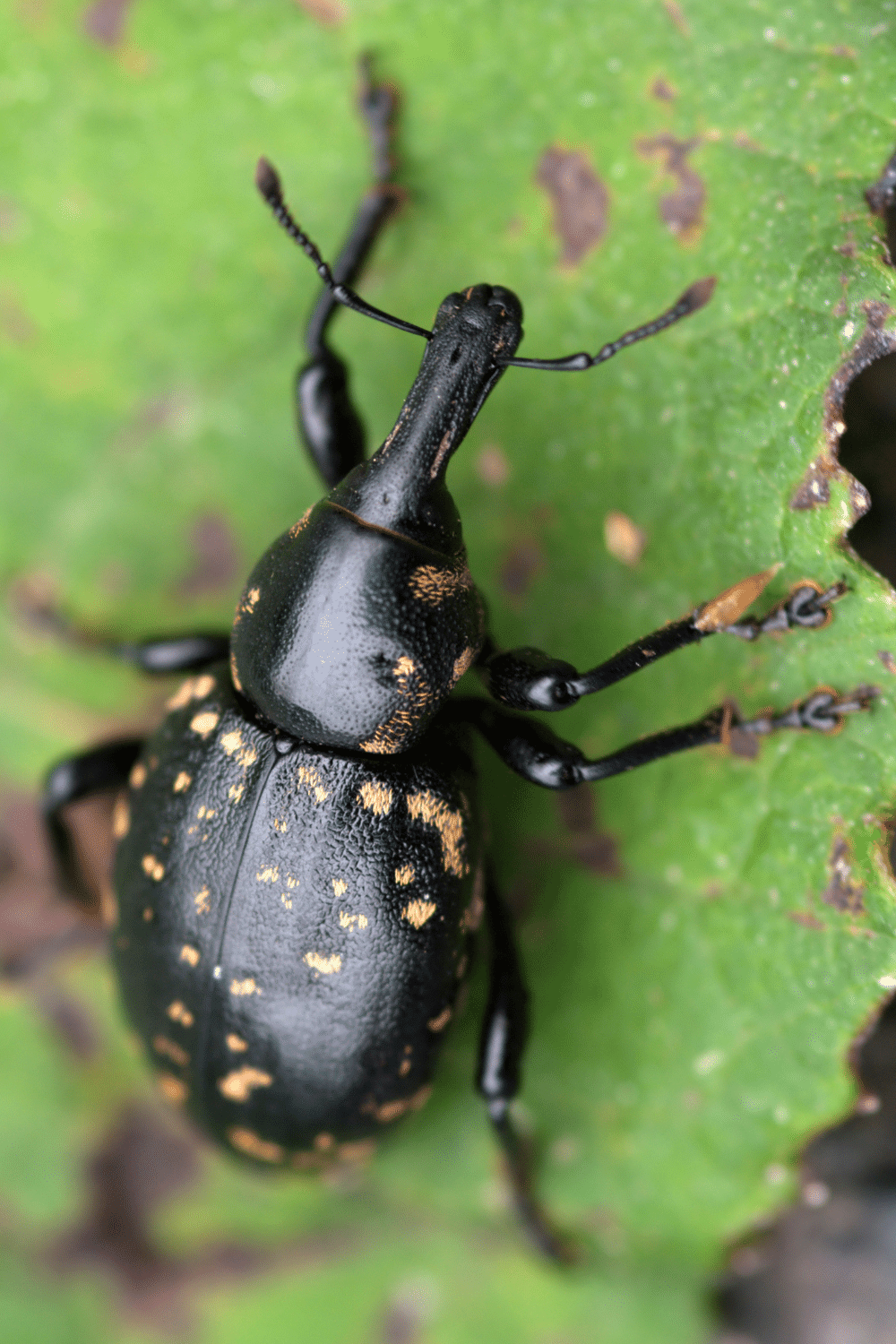
10. Ash Plant Bug
It receives its title from the fact that it feeds on tree sap, notably that of ash trees. They are a nuisance in ash tree trunks as they dry out the sap, resulting in wilt and eventual tree mortality.
They are quite little, resembling deer ticks rather than the actual ticks that feast on humans. Due to their spherical form and black appearance, they are mistaken for ticks.
The only technique to tell them from ticks is by their six legs.
- Scientific Name: Tropidosteptes amoenus
- Size: Adults grow up to 1/4-inch long, and nymphs range up to 1/8-inch long.
- Color: Vary from pale yellow to brownish to greenish
- Shape: Oval-shaped
- Body: Nymphs are more like aphids, and adults are slender
- Antennae and wings: Have wings that cover the abdomen
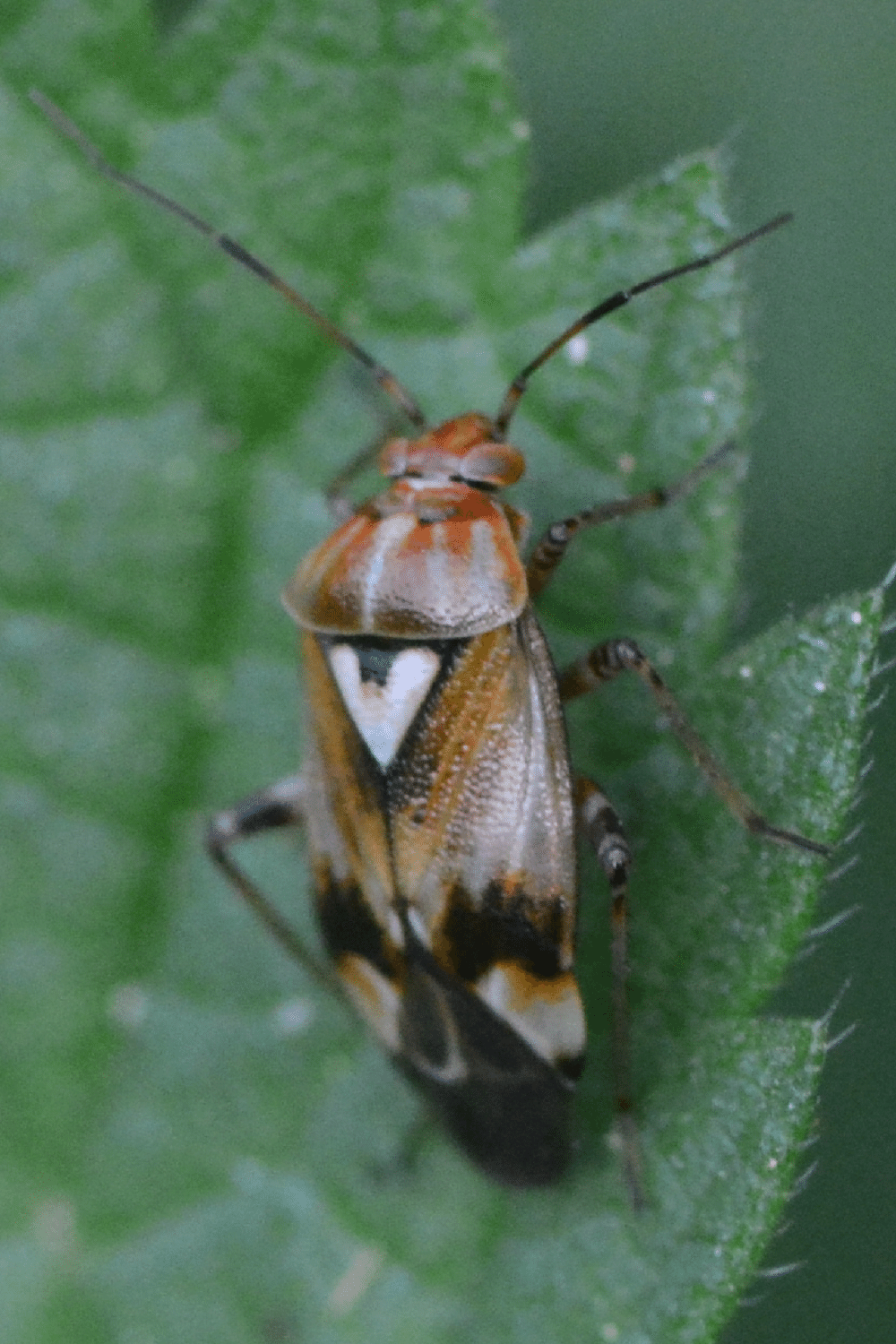
11. Booklice Bug
As the title suggests, they’re also known as Psocids, and they hide in old books. They eat book pulp rather than human blood, unlike ticks.
Nevertheless, because they prey on algae, fungi, and rotting debris, they may pose a health danger if they make their way into your library.
They are normally a pale, somewhat creamy brown tint that changes color when they ingest book bindings glues.
- Scientific Name: Psocoptera
- Size: 1/16 inches (1 mm) in length
- Color: Generally gray, white, or brown
- Shape: A broad face and paired chewing mouthparts
- Antennae and wings: Long segmented antennae and wingless
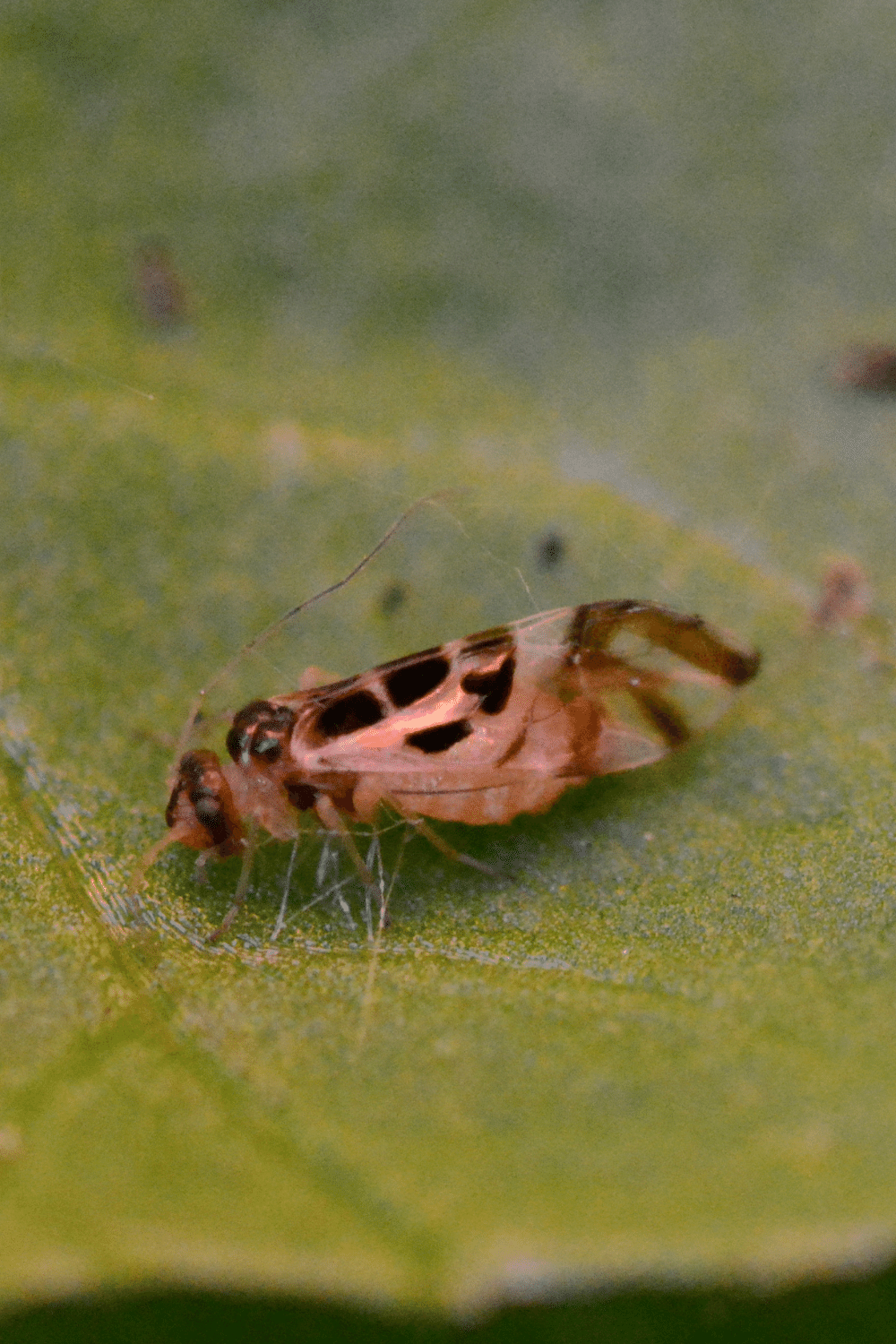
12. Swallow Bug
Among the insects that resemble bed bugs is indeed the swallow bug. However, these bed bug replicas are not the same as bed bugs.
Swallow nests are infested with swallow bugs. Swallow bugs are parasitic insects that feed on the blood of swallow birds and young hatchlings.
This is how the term “swallow bug” came about. Swallows use mud granules to create their nests.
Organic materials such as hay, hairs, feathers, and fur are also used. Swallow bugs may readily hide within the nests of birds owing to their nesting supplies.
- Scientific Name: Oeciacus vicarius
- Size: Adults are roughly 3/16 of an inch in length
- Color: Reddish-brown
- Shape: Have a flattened, oval shape
- Legs: Powerful hind legs for crawling and climbing on the swallow nests
- Antennae and wings: Have visible antennae and are wingless
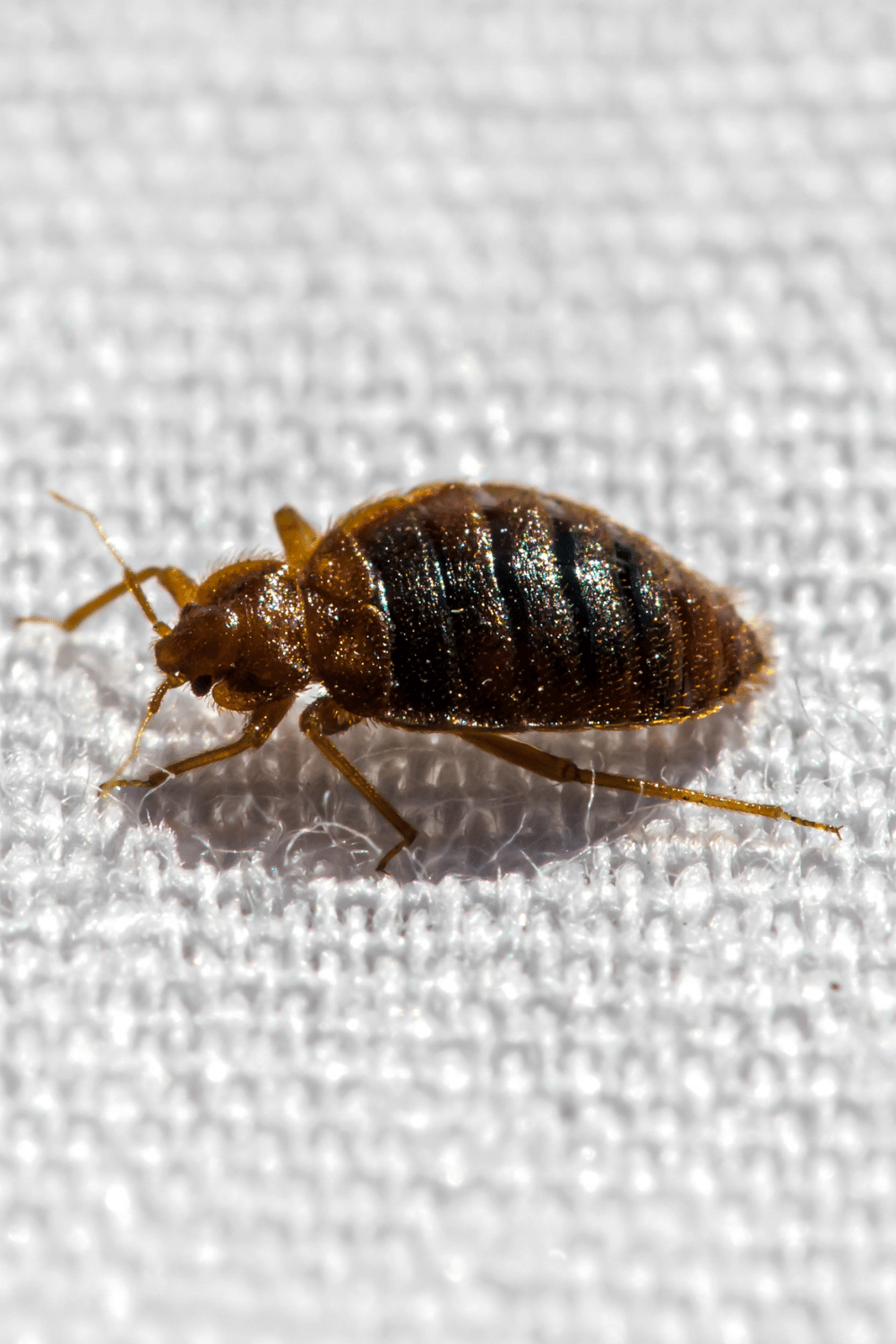
13. Carpet Beetles
Unlike ticks, this is a highly widespread domestic pest that is hardly encountered outside. They make their home in ceilings and rugs, as the title suggests.
Carpet strands, big fluffy fabrics, and other fiber home materials are their favorite foods. Carpet beetles are the most common cause of little white spots on your carpet or fabrics.
- Scientific Name: Anthrenus verbasci
- Size: 0.08 to 0.2 inches(2-4 mm) in length
- Color: Ranging in color from black- to various mottled patterns of orange, yellow, brown, and white
- Shape: Oval-shaped bodies with a striped shell
- Legs: The carpet beetle has 6 legs
- Antennae and wings: A pair of antennae and operative wings
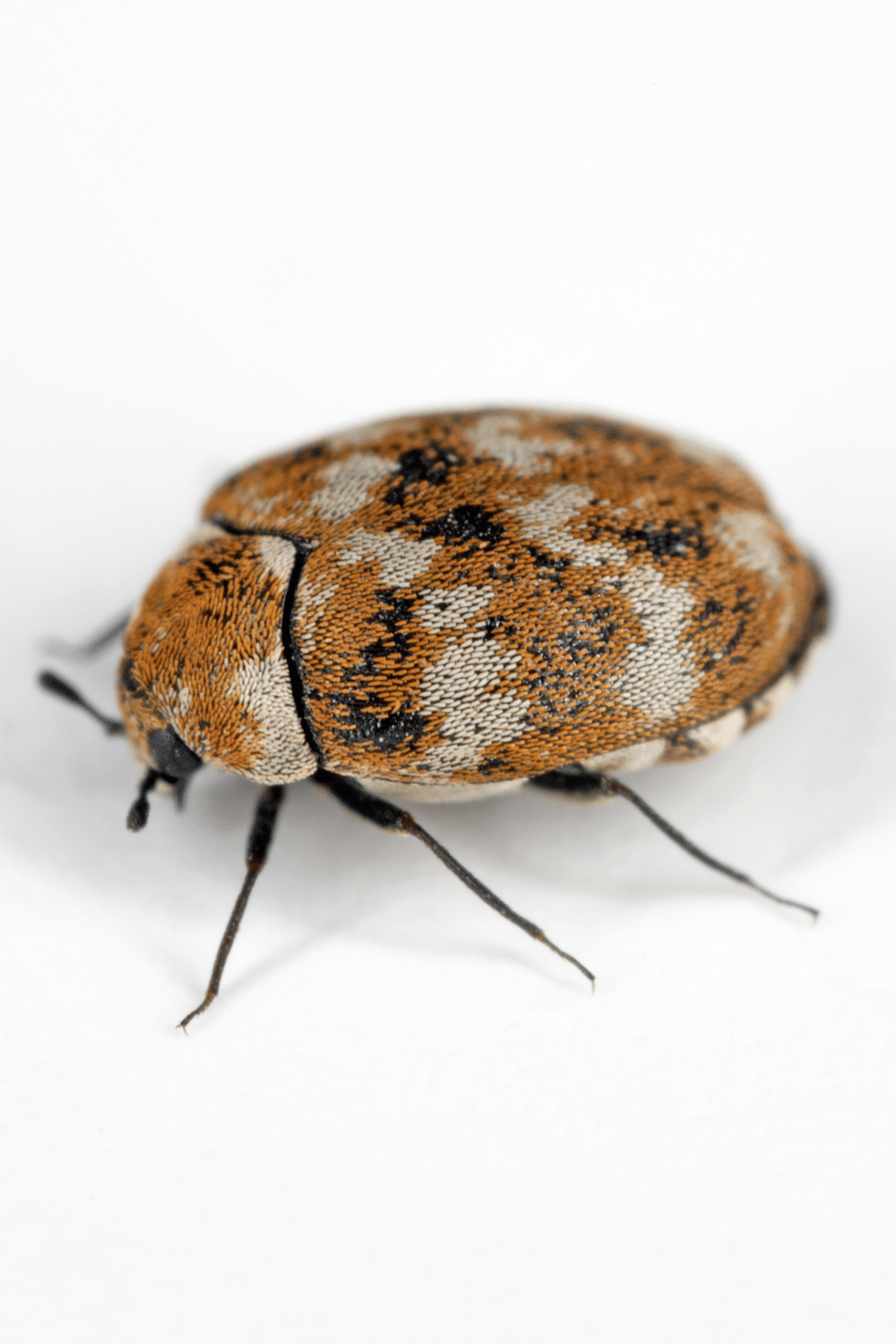
14. Spider Beetle
These insects have six legs, two additional projections on their heads, and a circular deep-red body.
Many individuals confuse these insects for eight-legged spiders because of this. Spider beetles, on the other hand, are safe for people.
Spider beetles are infamous for inflicting food damage, making them a serious threat to restaurants, large facilities, and kitchen cabinets.
They start reproducing as soon as they get to the food, immediately conquering and plaguing the region. Because they aren’t choosy, they will eat practically everything, from cereal to toast and nuts.
- Scientific Name: Ptininae
- Size: 0.08 to 0.2 inches (2-5 mm) in length
- Color: black or red-brown to pale yellow or cream
- Shape: Appear oval or cylindrical
- Legs: Six legs
- Antennae and wings: Antennas are covered with hair and are the same color as the abdomen, and are wingless
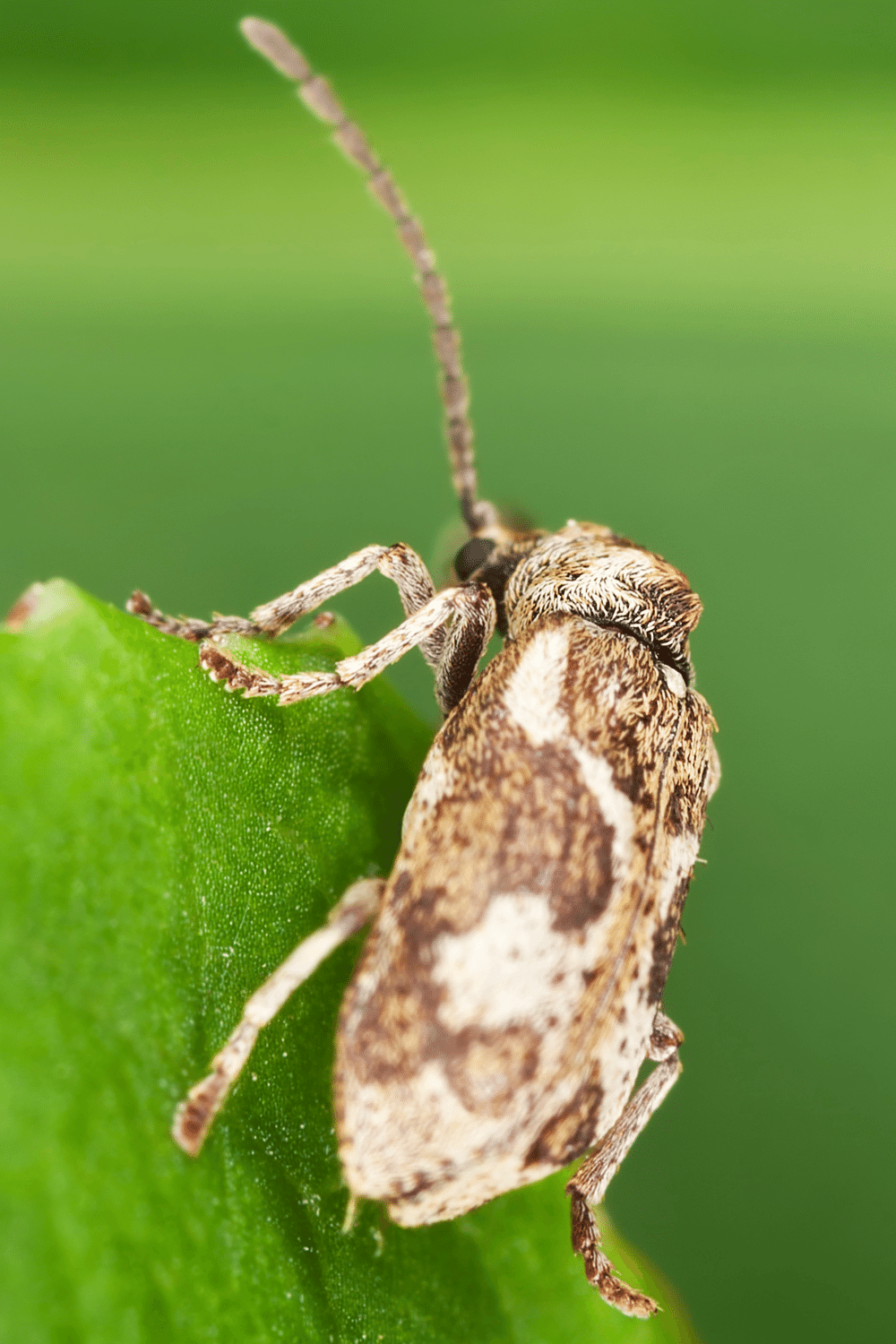
15. Cockroach Nymphs
Cockroach nymphs are easiest to spot because they resemble adults but are tiny. They are white when they first emerge but quickly darken and eventually turn dark brown, just like adult bugs.
Nymphs of any cockroach genus can be discovered in places in which there is foodstuff, such as restaurants, and in any home or corporate facilities where edible goods are present, just like adults.
The nymphs are aggressive at nighttime and, like adult bugs, are known to spread diseases like diarrhea, typhoid, and gastroenteritis.
The main modification, of course, is that neither of those tick-like bugs preys on human blood.
- Scientific Name: Blattodea
- Size: One-quarter of an inch long
- Color: Brownish-gray
- Shape: They look like their adults but are relatively small
- Legs: Six legs
- Antennae and wings: Lack wings and only develop once they reach adulthood
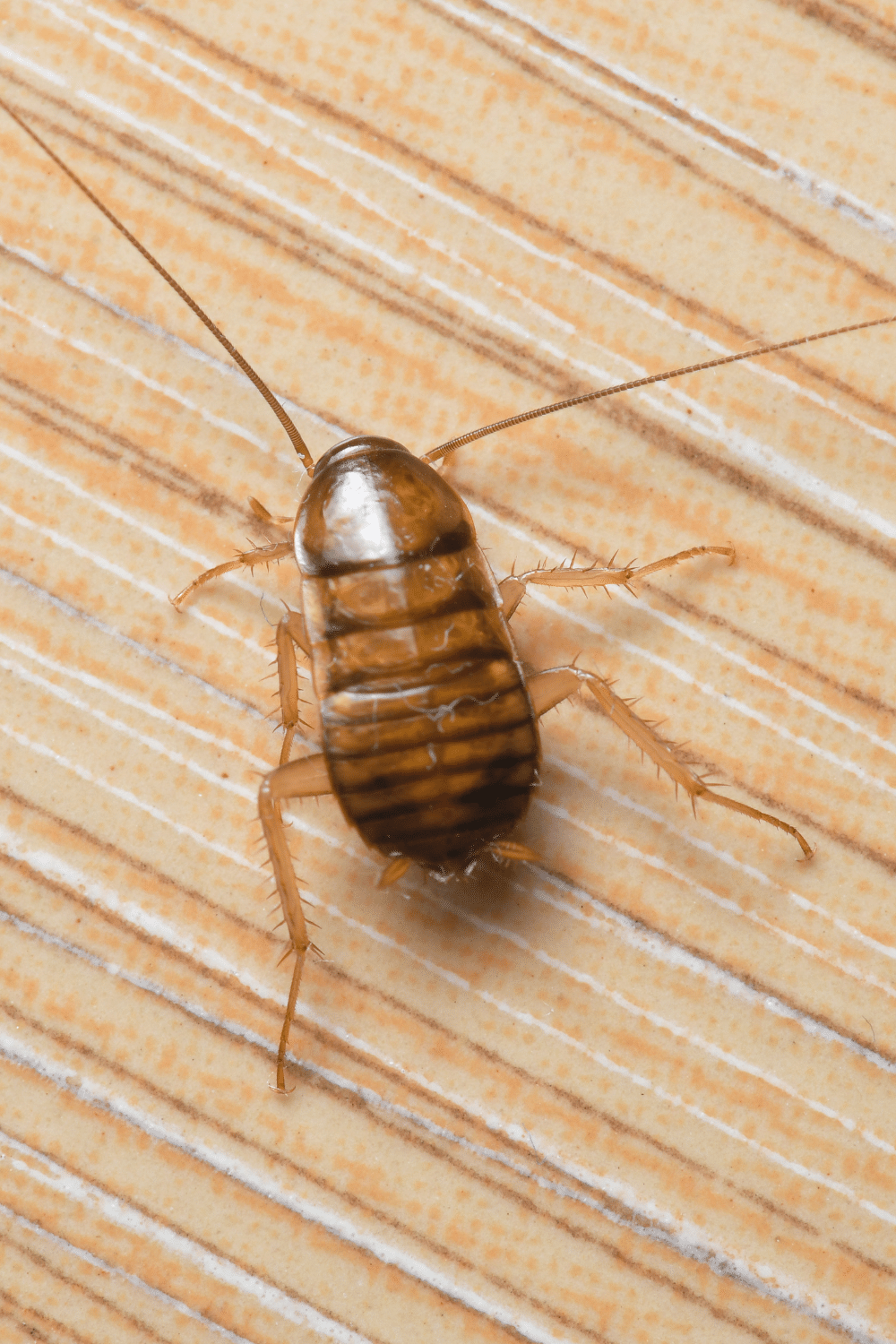
16. Deer Bloodsucker
Many bugs, such as fleas, ticks, and mosquitoes, appear like this. It is a tough beetle with solid claws, thick legs, and a robust body.
It prefers to live in wooded areas, nipping at bushes and trees. Its three sets of limbs and virtually transparent wings are its most distinguishing characteristics.
Elks, cattle, deer, and other creatures are the most prevalent targets. They could invade houses and feed on people’s blood if their area ran out of animals. They, like ticks, may carry Lyme infection and other diseases.
- Scientific Name: Chrysops
- Color: Light-brown or yellow
- Legs: Firm legs with claws
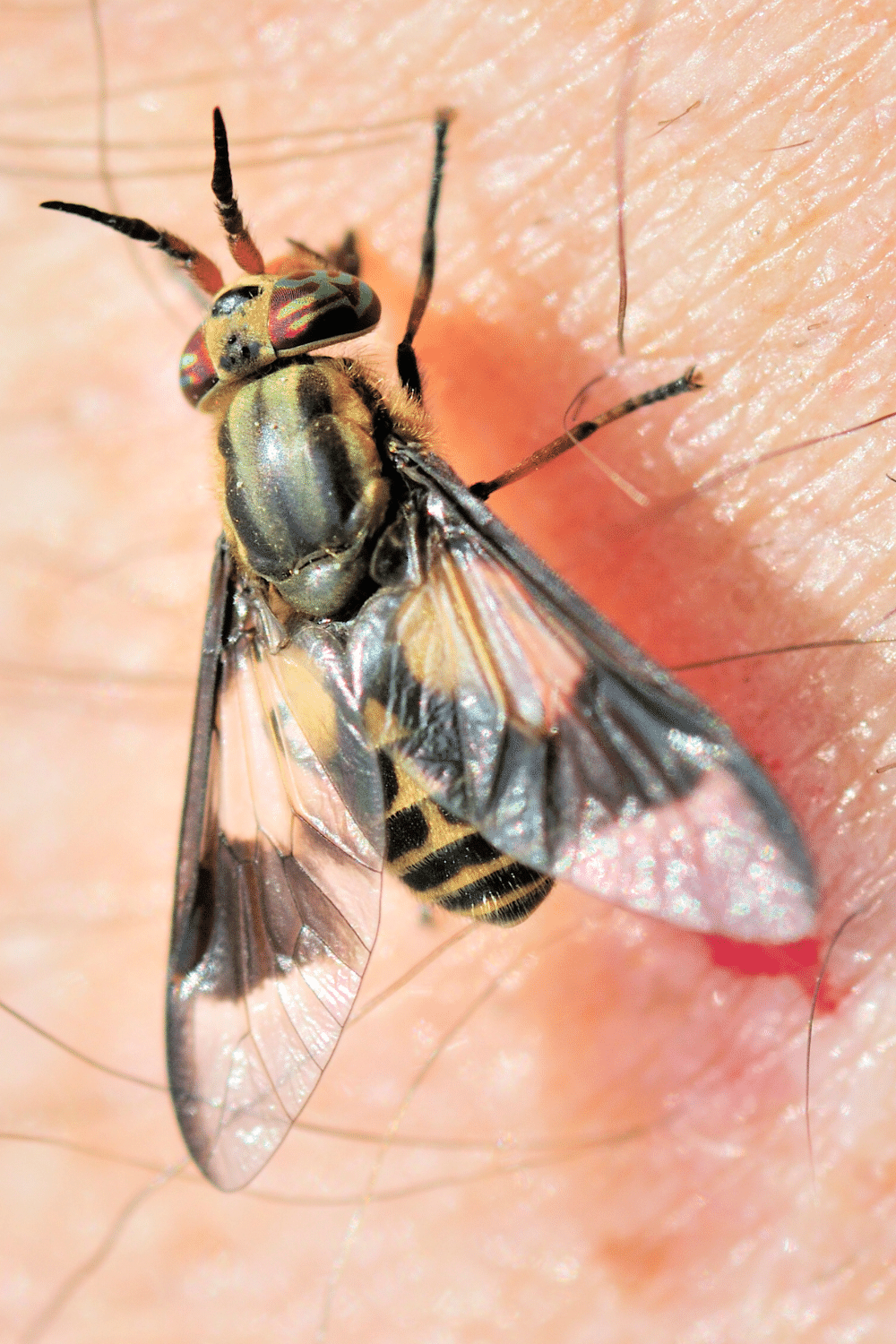
17. Bat Bug
They are more frequently discovered in closets, and their title comes from their bat-like characteristics. They reside in holes in the wilderness, where they eat bats. Bat bugs, similar to ticks, have tube-like jaws.
However, they are more closely related to bed bugs than ticks, with a small body and a hairier body.
- Scientific Name: Cimicidae
- Size: Between 0.14 and 0.2 inches (3.5 and 5 mm) long
- Color: Beige or transparent tan
- Shape: Small, oval-shaped
- Body: Have six legs, a thorax, ahead, and an abdomen
- Antennae and wings: Two antennas and wing pads, but don’t have functional wings
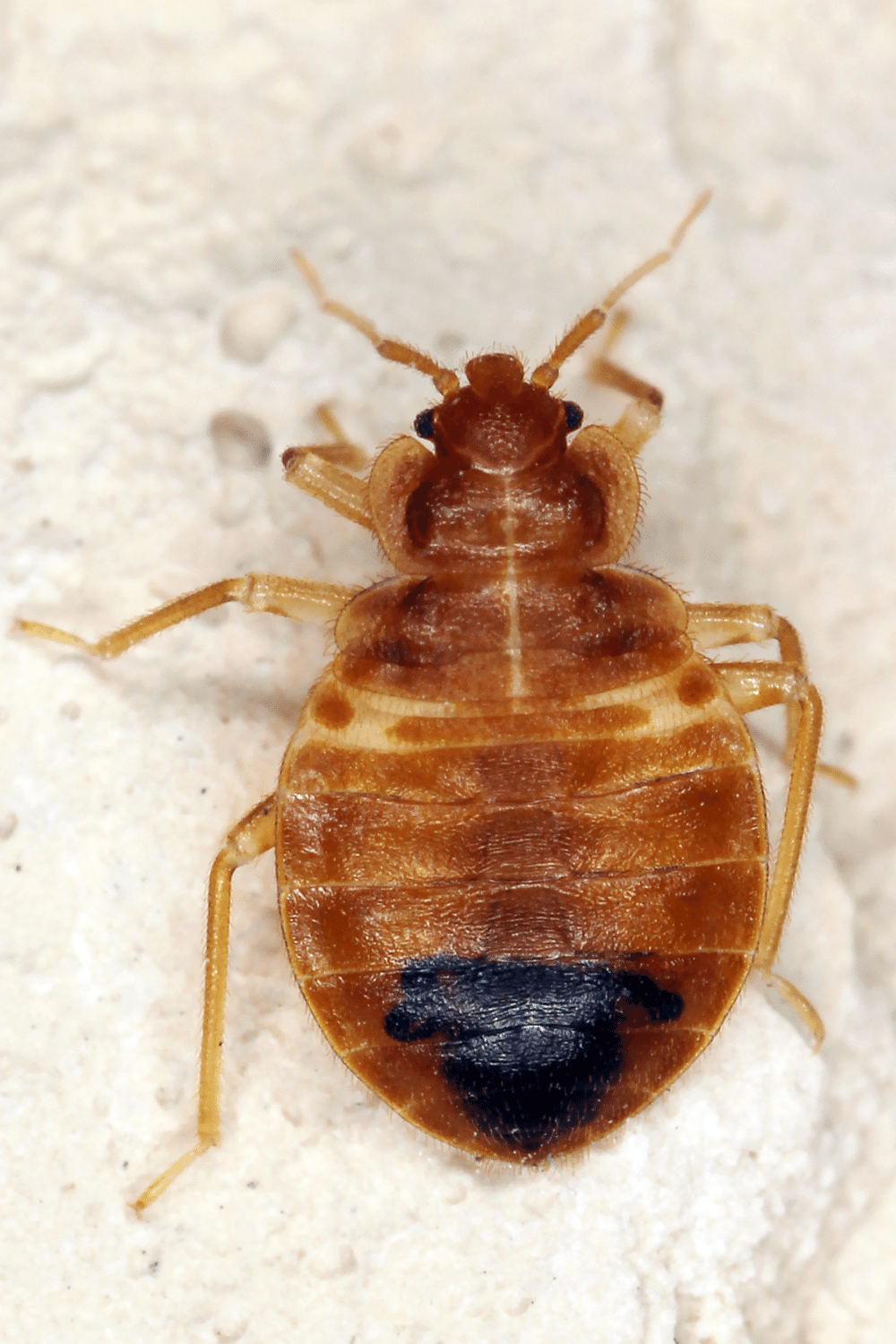
18. Chigger
Harvesting mites, sometimes known as red bugs, are not real mites and are more closely linked to scorpions, arachnids, and ticks.
Their crimson color and semi-transparent shell make them easily identifiable. They have only six legs as opposed to ticks and are therefore not hazardous to humans.
- Scientific Name: Trombiculidae
- Size: Adults are about 1/60 of an inch, and larvae less than 1/150 of an inch
- Color: Red
- Shape: Mostly like spiders
- Legs: Adults have eight legs
- Antennae and wings: Lack of wings and antennae
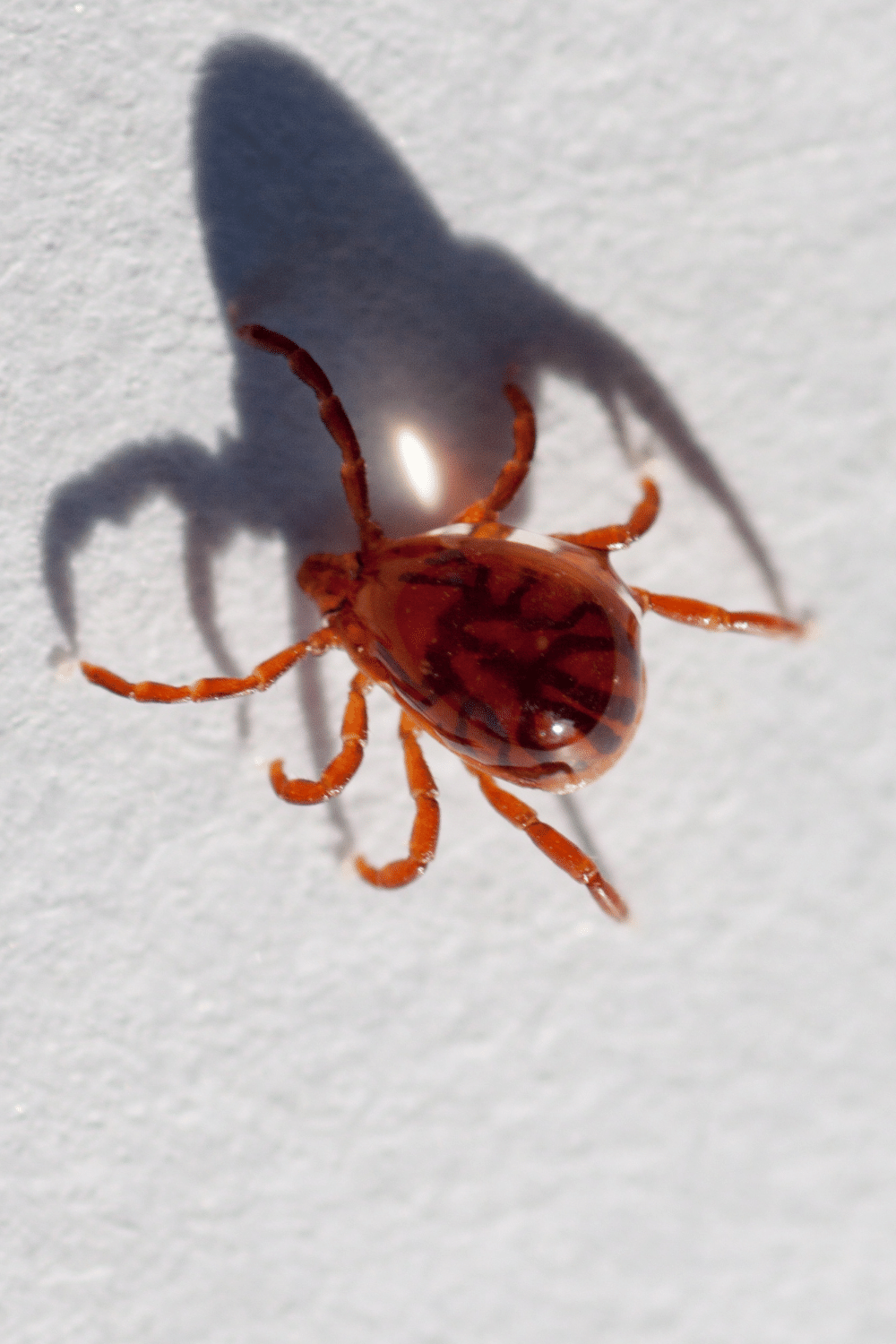
19. Spider
Spiders are all hunters. They are by far the most significant bug predators due to their prevalence. In China’s rice fields and Israel’s apple trees, spiders have been employed to combat insects.
In the rice fields of South America and fields of different North American plants, huge groups of spiders are seen feasting on insects.
- Scientific Name: Araneae
- Size: 0.02 to about 3.5 inches (0.5-90 mm)
- Color: Red, yellow, or bright green
- Body: Cephalothorax, Pedicel, and abdomen
- Legs: Have eight walking legs
- Antennae and wings: Lack of wings and antennae

20. Skin Beetle
These bugs have a strong appetite for food. They eat nearly anything, including clothing, linens, wood, cartons, papers, etc. Its black skull and brown abdomen can recognize it.
Due to their small size, they are equivalent to ticks, and they can potentially pose a health danger to people due to their omnivorous diet.
They don’t attack humans or feast on their blood, but they do occasionally nibble on their skin. They cause red, painful lesions on the skin when this occurs.
- Scientific Name: Dermestidae
- Size: Less than 0.5 inches (12 mm) long
- Color: Dull brown
- Shape: Oval or round
- Legs: Six legs to give them speed
- Antennae and wings: Clubbed antennae fit into deep grooves
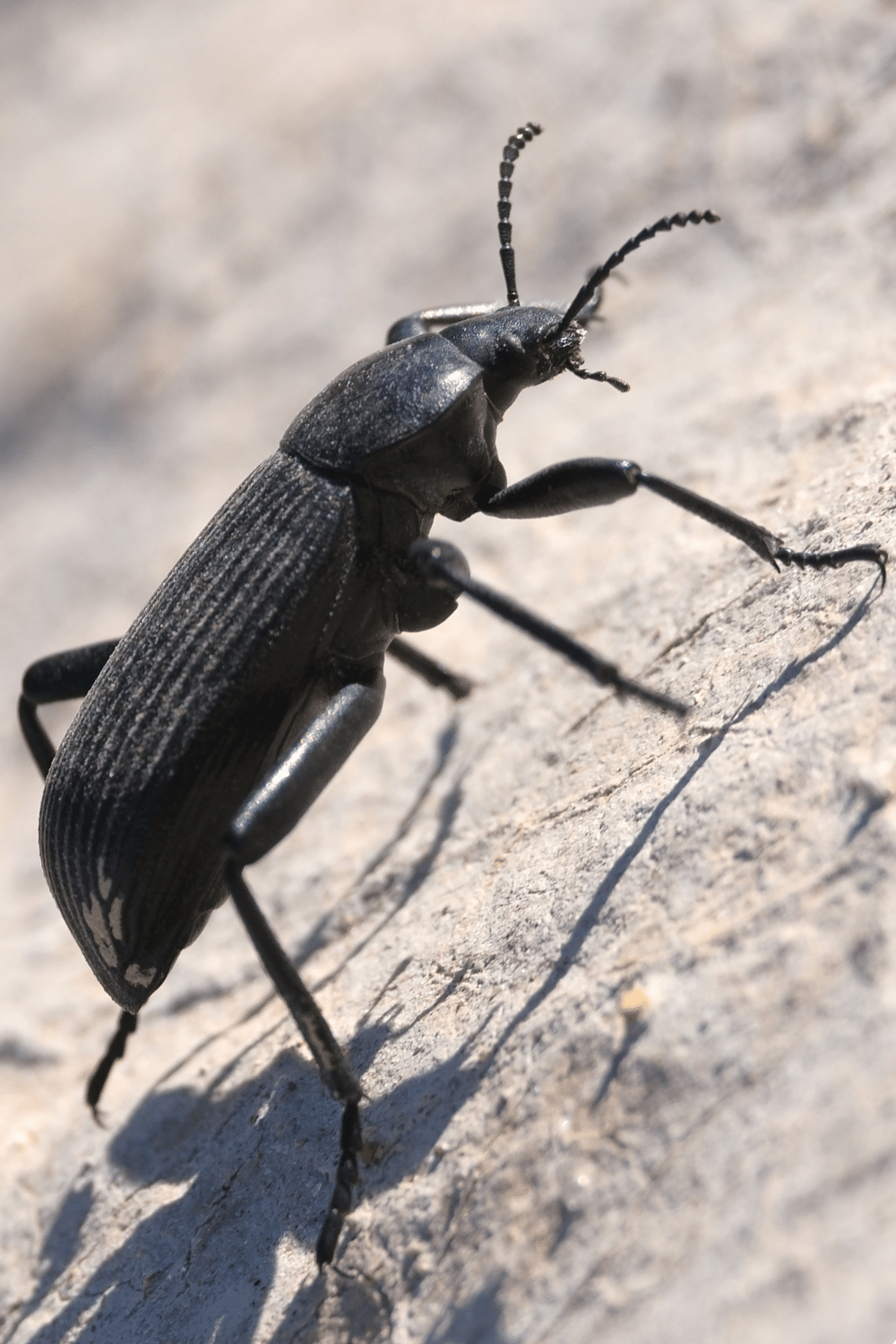
21. Spider Mites
Spider mites, which are related to spiders and dwell in warm, dry climates, are abundant in North America.
They have tiny oval-shaped bodies that are 1/50 inch in length and are typically reddish-brown or light in color. They grow in groups and prefer to reside on the undersides of leaves.
These organisms are not hazardous to humans because they rely on plant sap.
They also harm plants. They puncture the cells of the leaves, causing them to turn yellow, drop, or die.
Spider mites are particularly fond of melons, berries, aubergine, vegetables, and most houseplants, posing a threat to our crops and nurseries.
- Scientific Name: Tetranychidae
- Size: Less than 0.04 inch (1 mm)
- Color: Range from brown and red to yellow and green
- Shape: Oval-shaped
- Legs: Larvae have six legs, and adults have eight legs
- Antennae and wings: They do not have antennae or wings
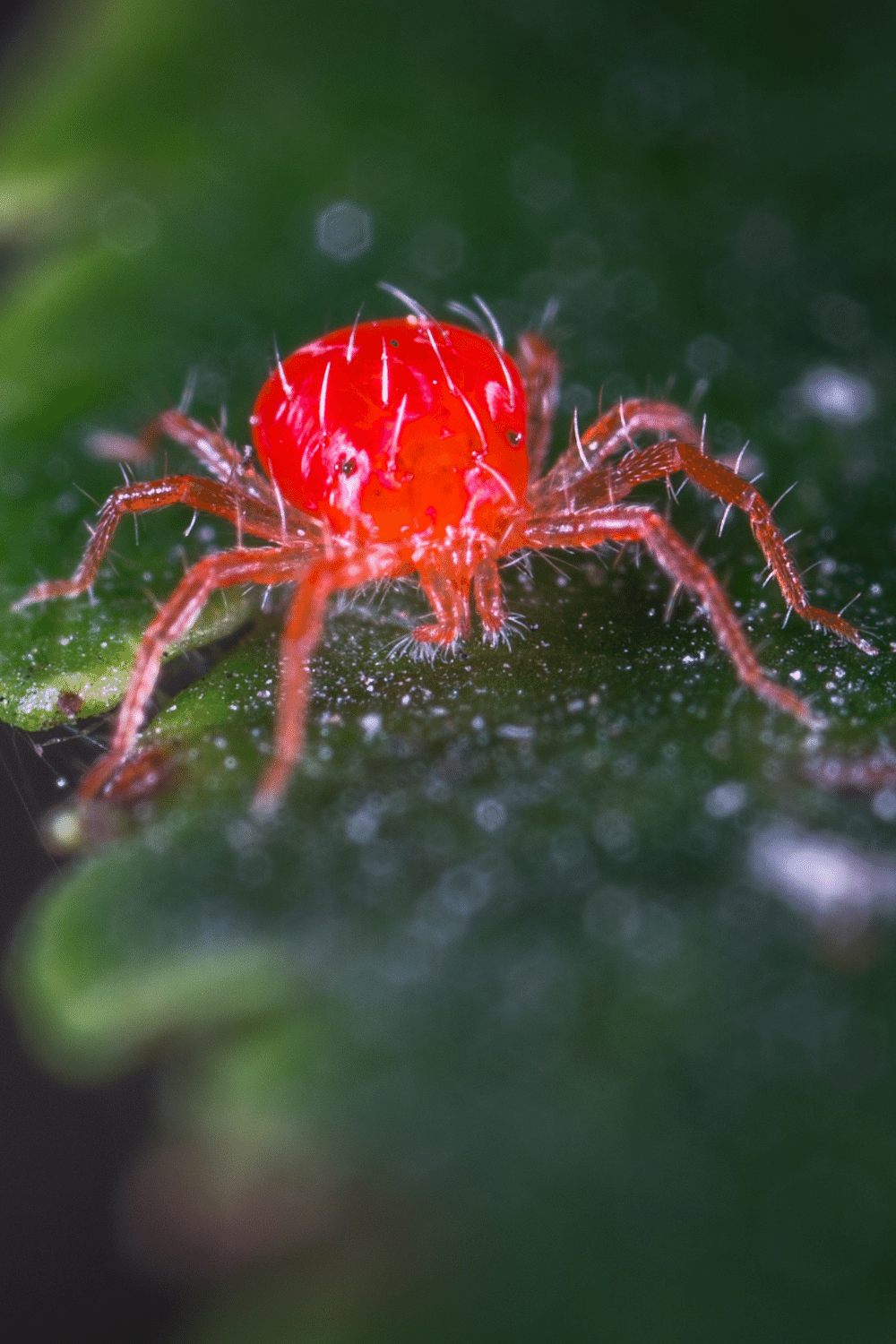
22. Clover mites
They are typical garden insects that will infest your garden or backyard throughout the summer. They are native to areas where clovers flourish, such as arid, hot weather.
They have antennae-like legs, are soft-bodied tiny critters, and are often vivid red in coloration. They may not bite people, but they can be toxic to plants.
- Scientific Name: Bryobia praetiosa
- Size: Smaller than a pinhead, about 1/30 inch
- Color: Rusty red in color also appears as olive green
- Shape: Oval-shaped with featherlike plates on the abdomen
- Legs: Have eight legs
- Antennae and wings: Lack of wings and antennae
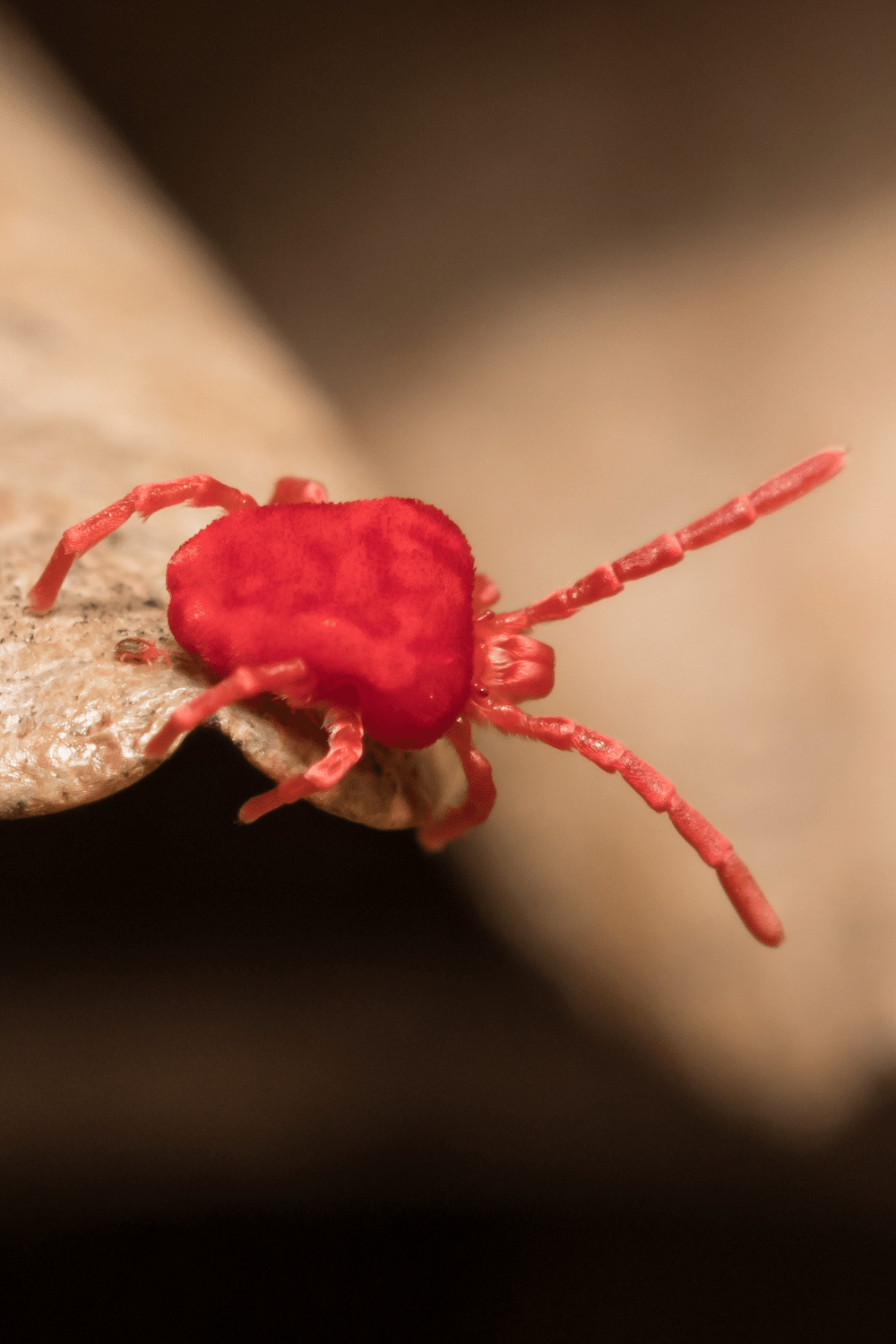
23. Ebony Bugs
Ebony bugs eat on seedlings developing in the earth and nectar from flowers. They’ll stick their straw-like mouths into the blooms and buds and drink the juice and sap.
The ebony bugs, much like black bean bugs, feast in large numbers. Flowers that emerge in groups a few meters above the floor are their goal.
Ebony bugs are most commonly found in grassy regions such as meadows, farms, and even your lawns. They are sometimes mistaken for black bean bugs.
However, there are a few minor distinctions that only a professional can detect.
- Scientific Name: Corimelaena lateralis
- Size: About ¼ inches
- Color: Shiny black
- Shape: Oval
- Legs: Six legs
- Antennae: 5 segmented Antennae
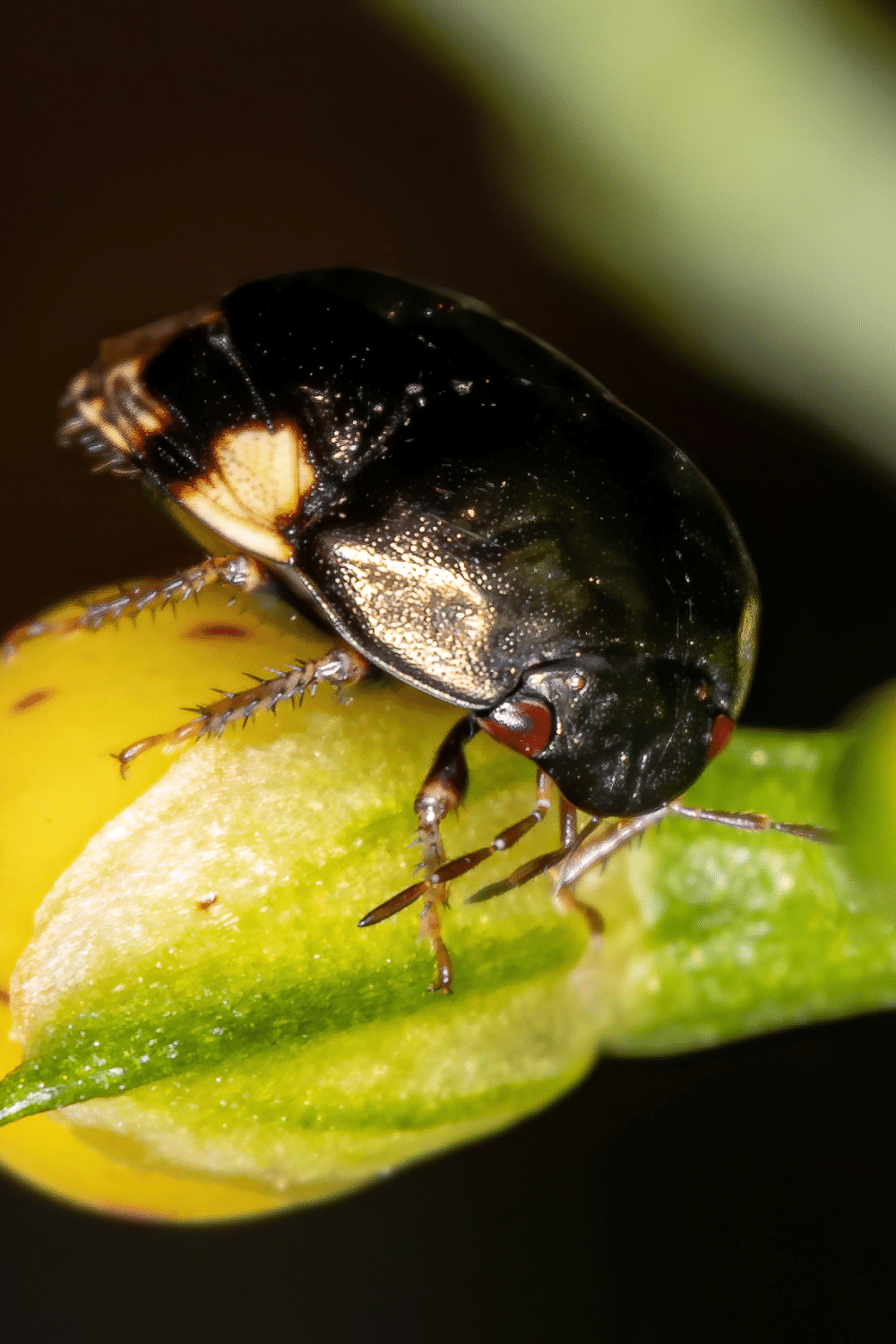
24. Fleas
Fleas, which are reddish-brown in appearance, are frequent sightings for people who have animals. Fleas are frequently confused with bed bugs since their bites are typically highly irritating.
They are distinguished from bed bugs by their size and morphology, which are divided and horizontally flattened. Refer to your doctor if you’re thinking a flea bit you. Fleas, like other insects, are carriers of a wide range of diseases.
- Scientific Name: Siphonaptera
- Size: 0.039 to 0.13 inch (0.1 to 0.32 cm) in length
- Color: Dark reddish-brown
- Shape: Oval-shaped with a hard shell
- Legs: Six legs
- Antennae and wings: Wingless with two antennae
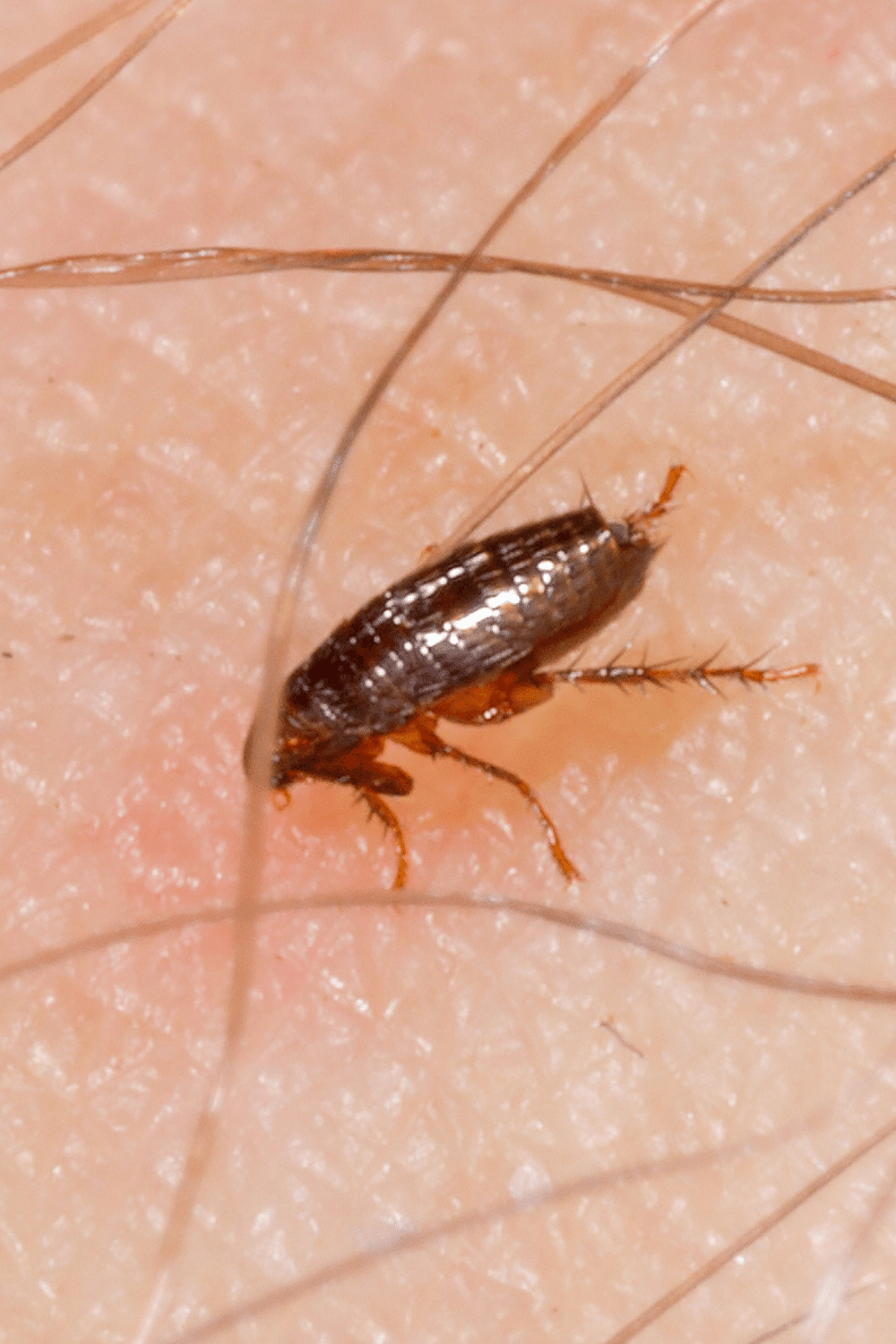
25. Mealybugs
Mealybugs are not harmful to humans; however, they do pose a serious threat to plants.
Farms, greenhouses, and houseplants are all easy targets for them. These wingless beetles, which imitate white cottony mass, are typically found in humid conditions. P
lant juice, which they collect from plant cells when eating on foliage, branches, or berries, is their primary food supply.
Mealybugs are drawn to plants with large amounts of nitrogen, so don’t overwater or feed them if you want to keep them under control. Applying pesticides will also aid in efficiently warding off these insects.
- Scientific Name: Pseudococcidae
- Size: 1/20 to 1/5 of an inch
- Color: Yellowish or pinkish body
- Shape: Soft-bodied, oval in shape, covered with cottony white filaments
- Legs: Most of them have well-developed legs and stay mobile all through their life
- Antennae and wings: Lacks antennae and wings
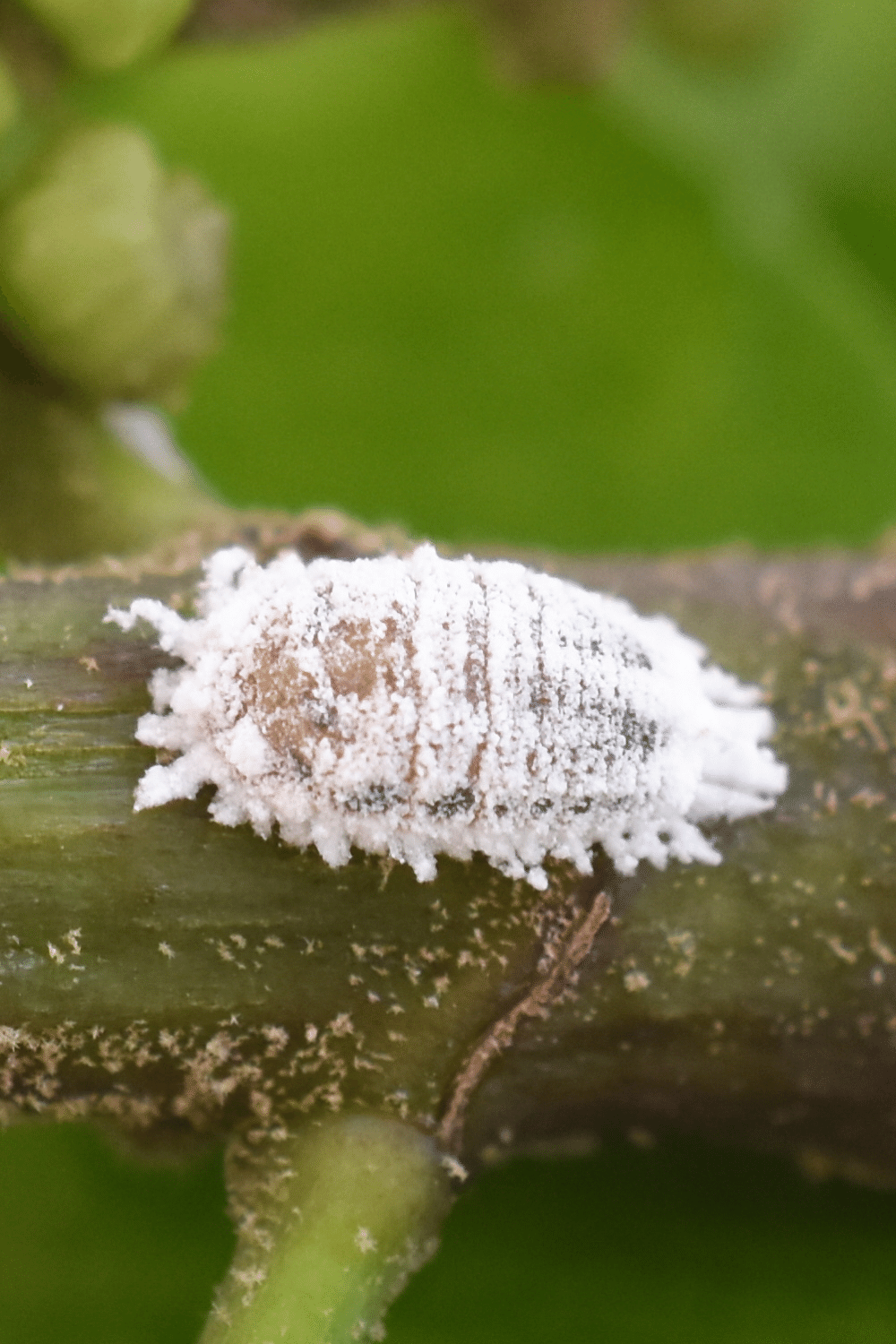
26. Pseudoscorpions
Pseudoscorpions, also known as ‘false scorpions’ or ‘book scorpions,’ are small (and nontoxic) spiders that consume a variety of minute bugs, insects, and eggs, hence why they can often be found in our homes.
They feed booklice, clothing worms, dust mites, termites, etc. Their claws contain a tiny poison duct utilized to sedate their small victim.
- Scientific Name: Pseudoscorpiones
- Size: 0.08 to 0.3 inches (2-8 mm) in length
- Color: Dark brown to yellowish beige
- Shape: Teardrop or oval-shaped, flattened bodies
- Legs: Eight legs
- Antennae and wings: Two antennae and are wingless
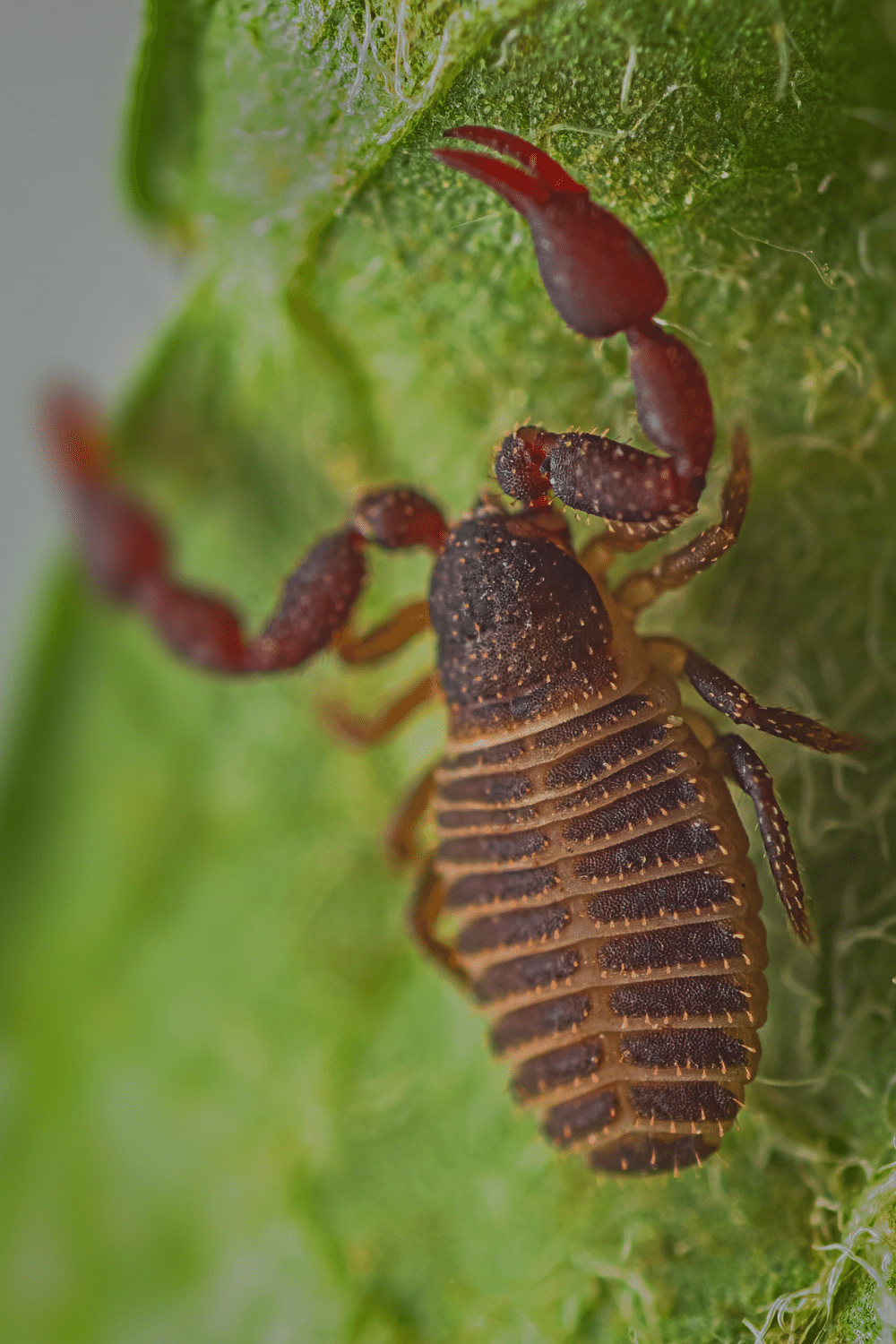
27. Smooth Spider Beetle
The smooth spider beetle is shaped and colored similarly to the American spider beetle. The skull, torso, legs, and antennae, on the other hand, seem to be a similar hue as the abdomen.
This genus looks like a huge, reddish mite more than other spider beetles.
- Scientific Name: Gibbium aequinoctiale
- Size: 0.04 to 0.2 inch (1 to 5 mm)
- Color: Reddish-brown to black
- Shape: Round
- Legs: Long thin legs
- Antennae and wings: Segmented antennae
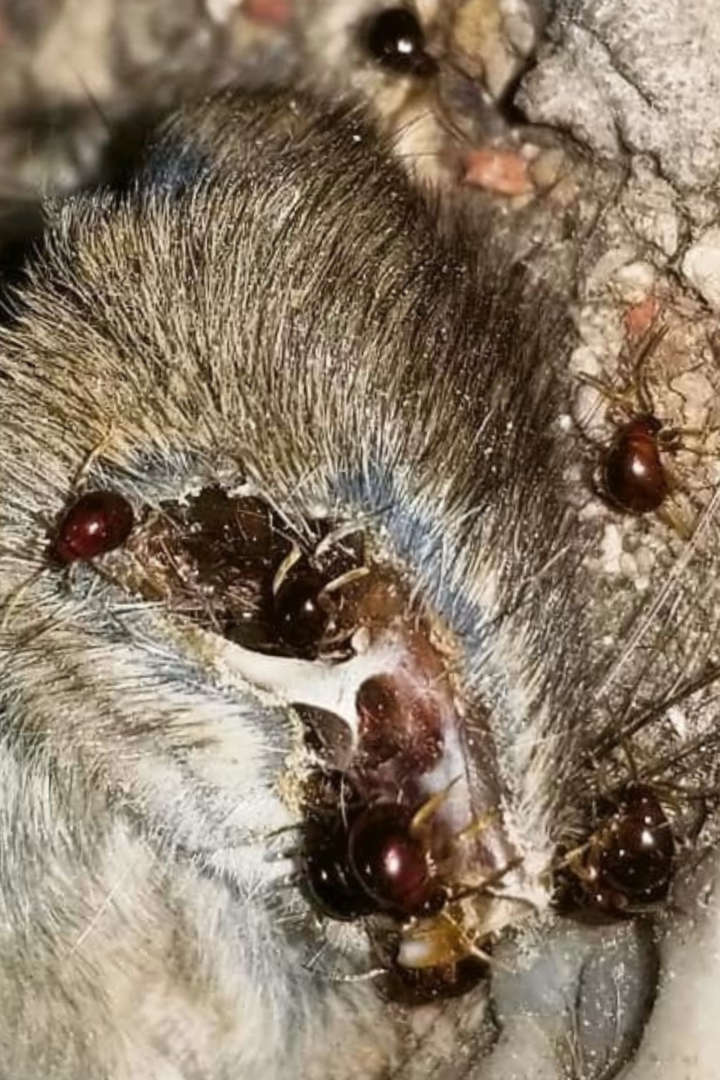
28. Black Bean Bugs
Black bean bugs sometimes referred to as black bean aphids, are small black bugs that are commonly found in gardens. Black bean bugs are serious pests, particularly on flowering shrubs and crops.
Black bean beetles eat plants in clusters, usually on the stalks of the plants. They drain up the plants’ fluid, depleting them of vital nutrients.
- Scientific Name: Aphis fabae
- Size: 0.2 inches (5 mm) long
- Color: Black or olive green
- Shape: Pear or tear-dropped
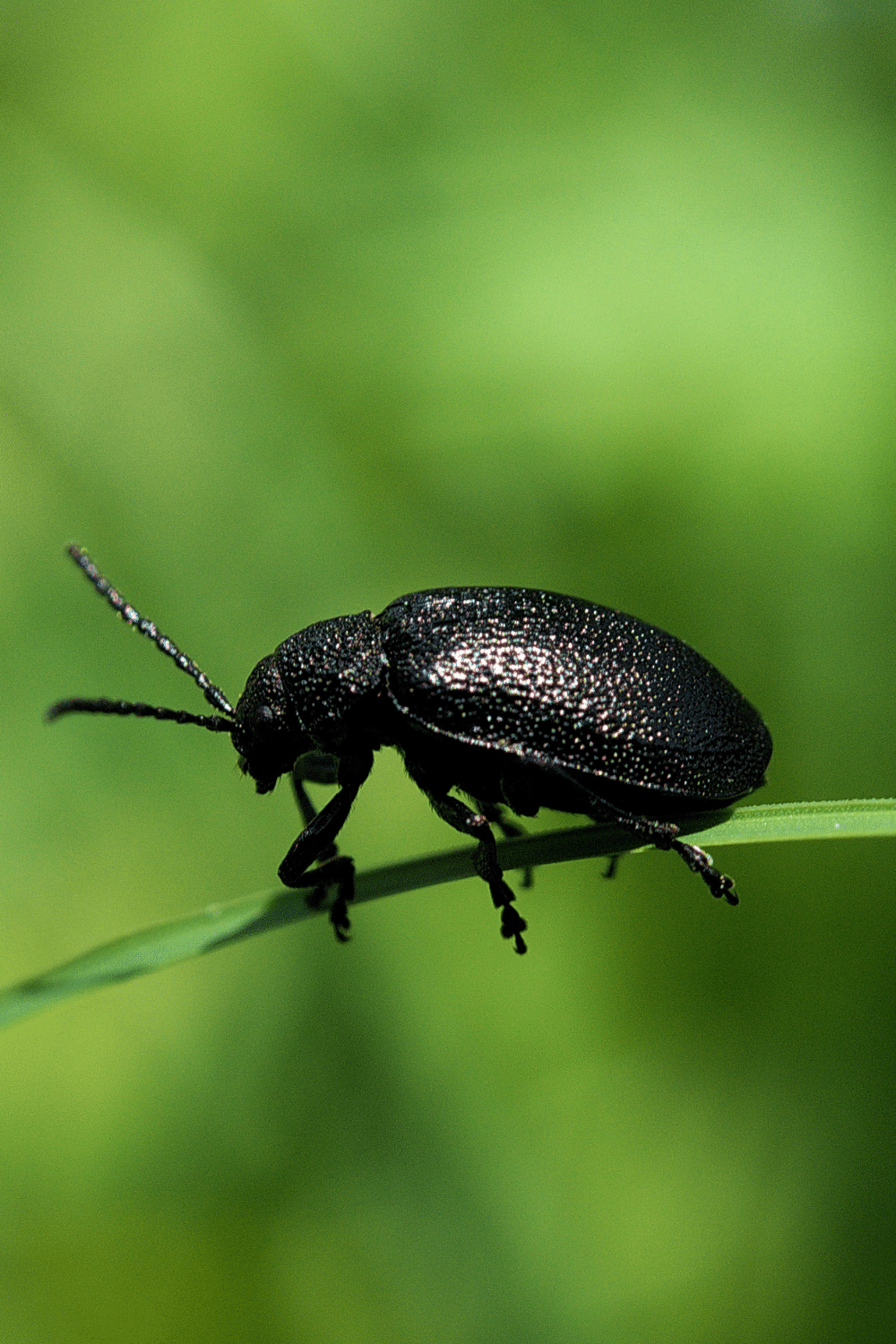
29. Whirligig Beetle
Water beetles, sometimes known as whirligig beetles, are abundant in gardens with ponds. They can even be found in a pool, but only when it is dirty.
Some water beetles and bugs are smaller than whirligig beetles. Whirligig beetles are watery insects that will perish if you leave them out of the water for prolonged periods.
- Scientific Name: Gyrinidae
- Size: 0.13 to 0.6 inches (3.5–14.0 mm) long
- Color: Metallic black or brown
- Shape: Flattened dorsoventrally
- Legs: Three pairs of legs
- Antennae: Clubbed, short antennae
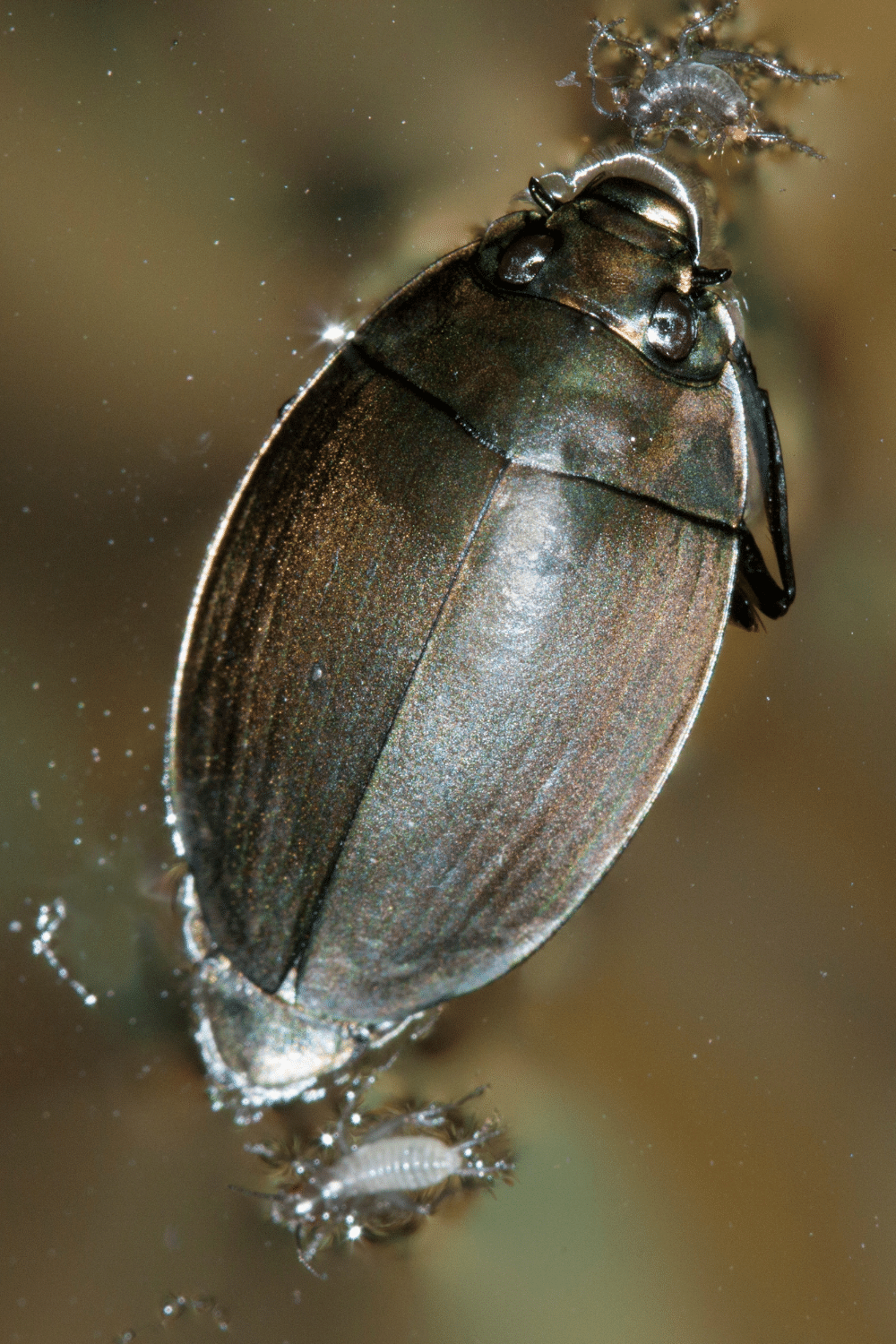
30. Earwigs
They are present in all regions, but Antarctica has roughly 2,000 varieties. They’re nocturnal and spend the day in wet, narrow cracks. As they feast on crops and other bugs at nighttime, they get quite busy.
They can cause harm to agriculture, fruits, and vegetation, making them aggressive bug species.
- Scientific Name: Dermaptera
- Size: 0.2 to 2 inches (5 to 50 mm) long
- Color: Pale brown to black
- Shape: Flat, elongated
- Legs: Six legs
- Antennae: Thread-like antennae
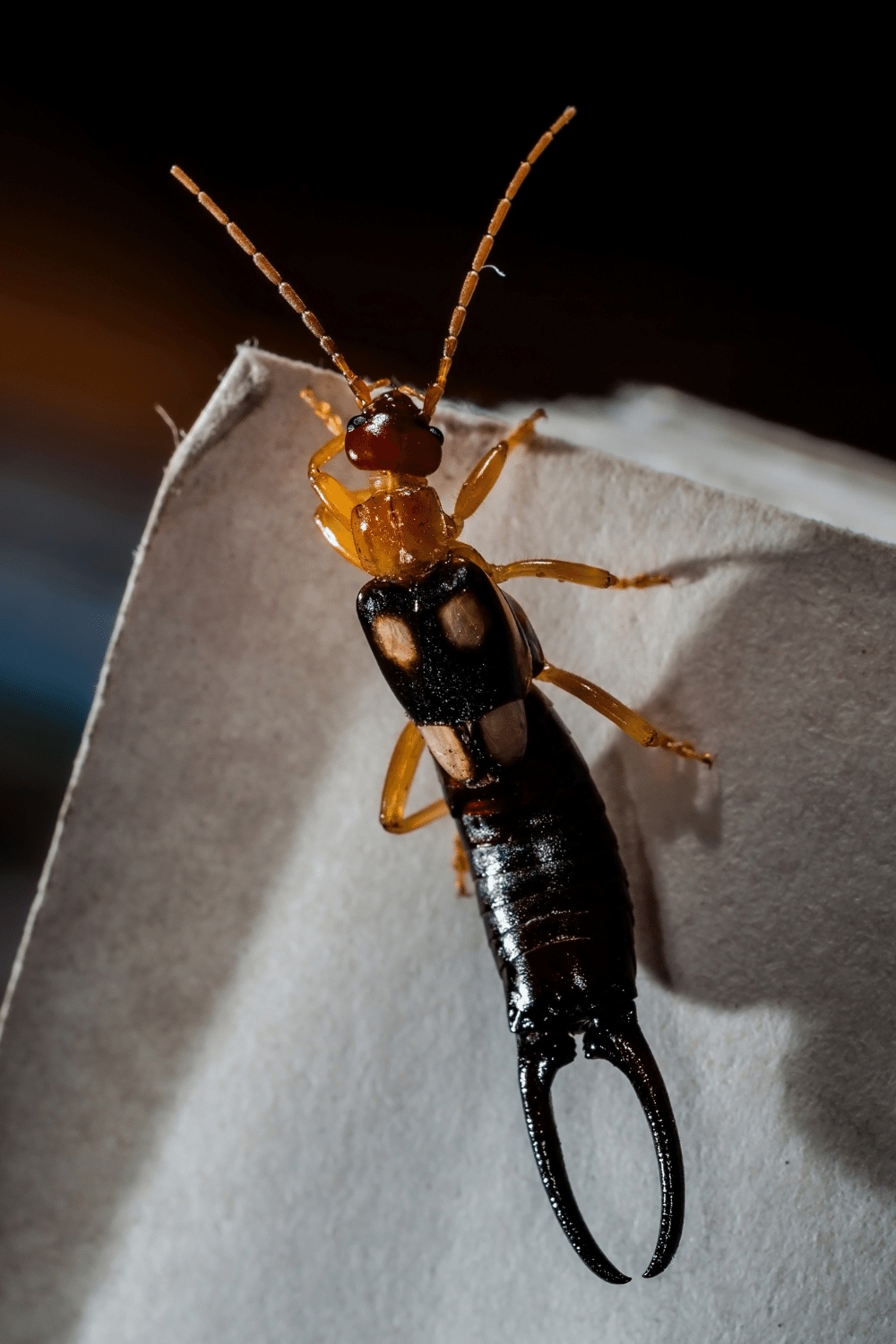
31. Silverfish
Silverfish acquire their title from their silver light grey appearance and fish-like motions. They are wingless insects belonging to the Zygentoma family.
The silverfish feeds on a meal of starch and sugar, earning it the scientific name ‘L. Saccharina.’
While they are young, they are white, but they turn a grey-blue tint with a glossy finish as they grow older.
They dislike sunshine and are fast-moving species that can easily outpace their attackers.
- Scientific Name: Lepisma saccharina
- Size: ½ to ¾ inches
- Color: Blue to light gray
- Shape: Flattened
- Legs: Six legs
- Antennae: Long on the head
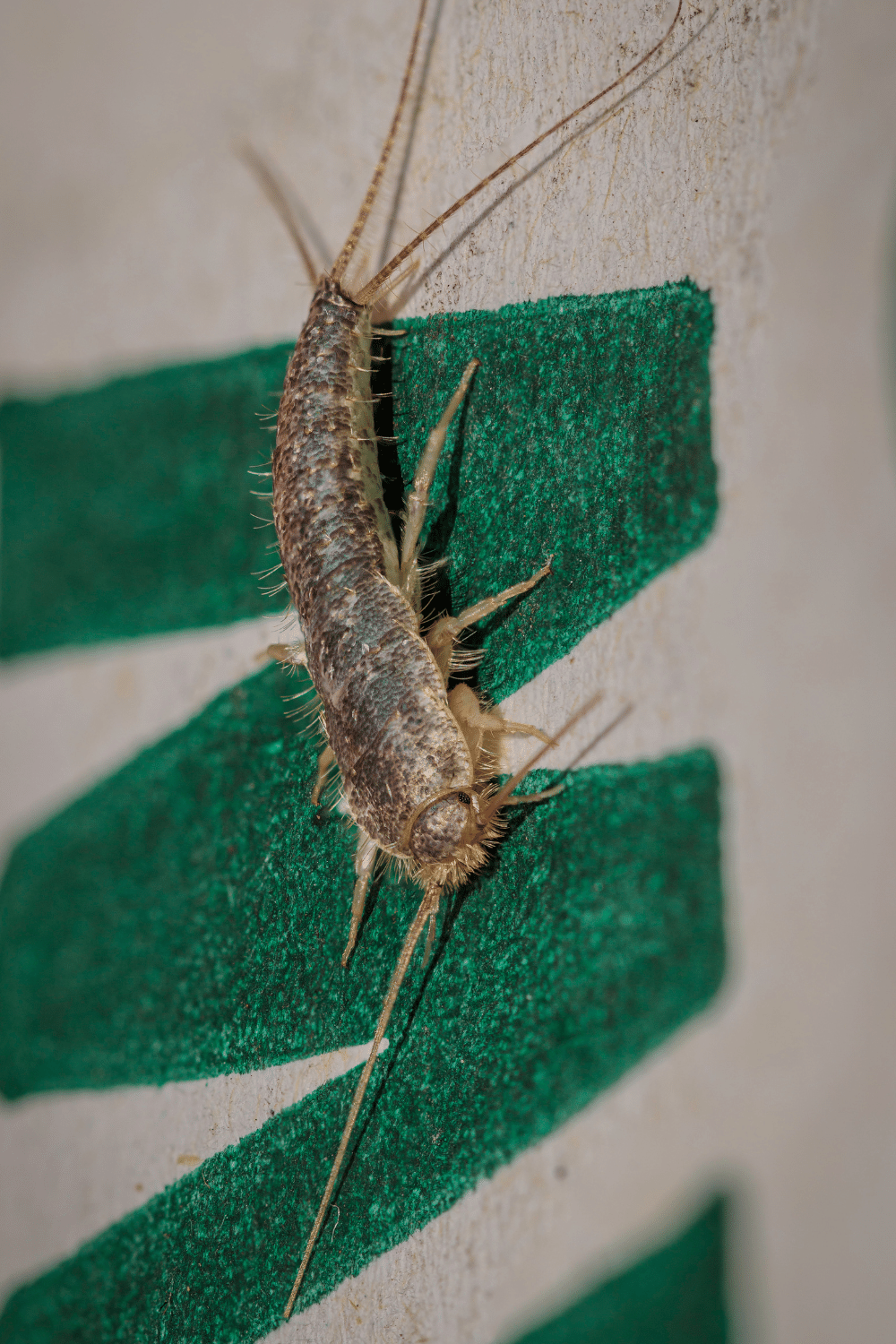
32. Viburnum Beetle
The viburnum beetle (family Chrysomelidae) is a leaf beetle with over 250 varieties in the United Kingdom. They all depend on plants, and the majority have little impact on the home garden.
Many are colorful, and many kinds are native or unusual to the area.
The viburnum beetle eats viburnum trees. The larva inflicts the majority of the harm in the springtime, although the mature beetles do some additional harm to the plant in the summer months.
- Scientific Name: Pyrrhalta viburni
- Size: 1/5 to ¼ inches (4.5 to 6.5 mm) long
- Color: Brownish-yellow with black spots
- Shape: Oval-shaped
- Legs: Six legs
- Antennae: Are half the body length
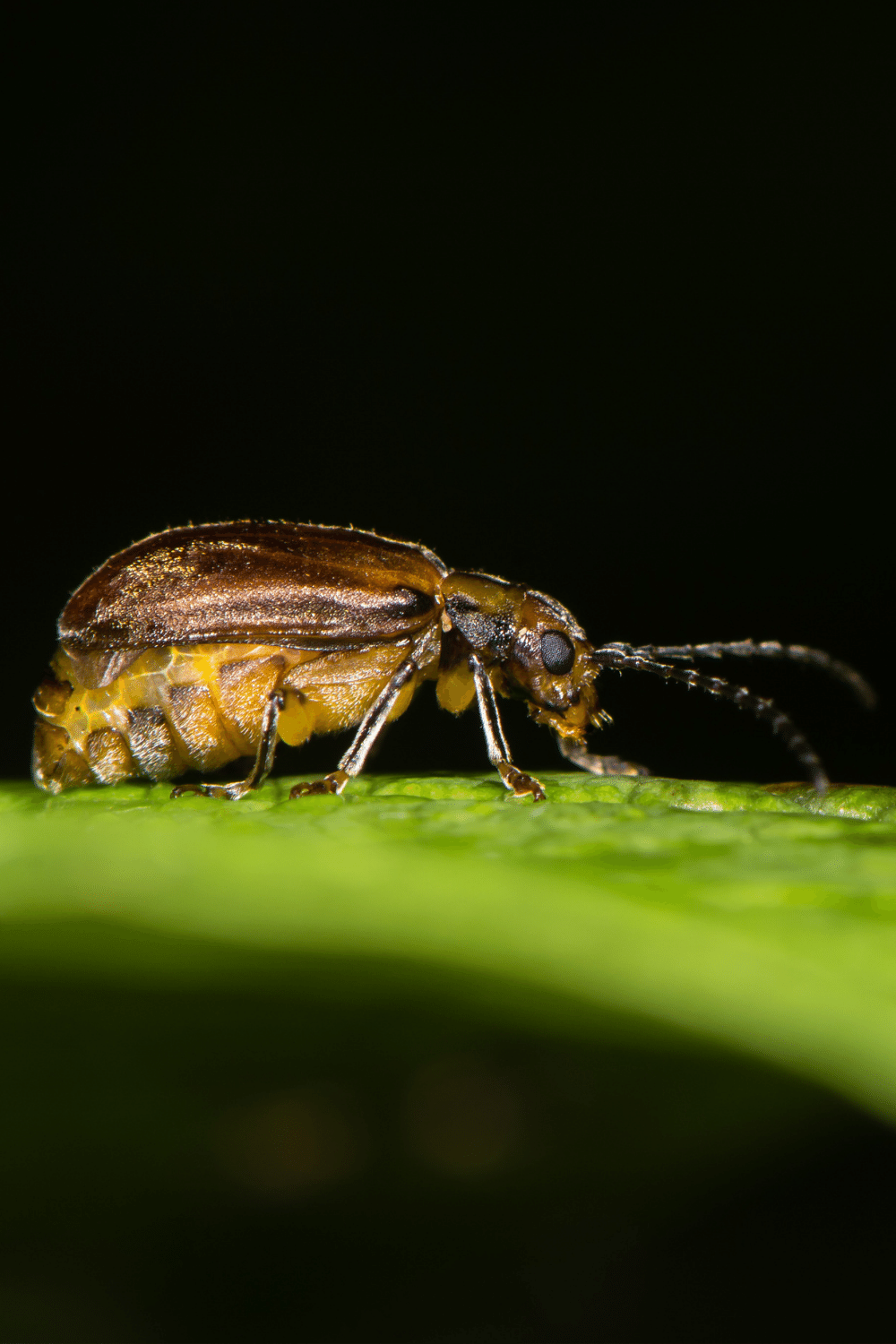
33. Cucumber Beetle
Cucumber beetles are a big problem for muskmelon and cucumber gardeners since they spread the bacterium that triggers bacterial wilt.
Although the adults eat mostly leaves, nectar, and petals, they may eat melon peels later in the season, lowering market value.
The insects’ larva prey on stems and roots, although the harm is minor relative to the losses caused by bacterial wilt.
- Scientific Name: Diabrotica undecimpunctata
- Size: 1/5 inch long
- Color: Yellow body with black spots
- Legs: Six pale-colored legs
- Wings: Yellow wings with black lines
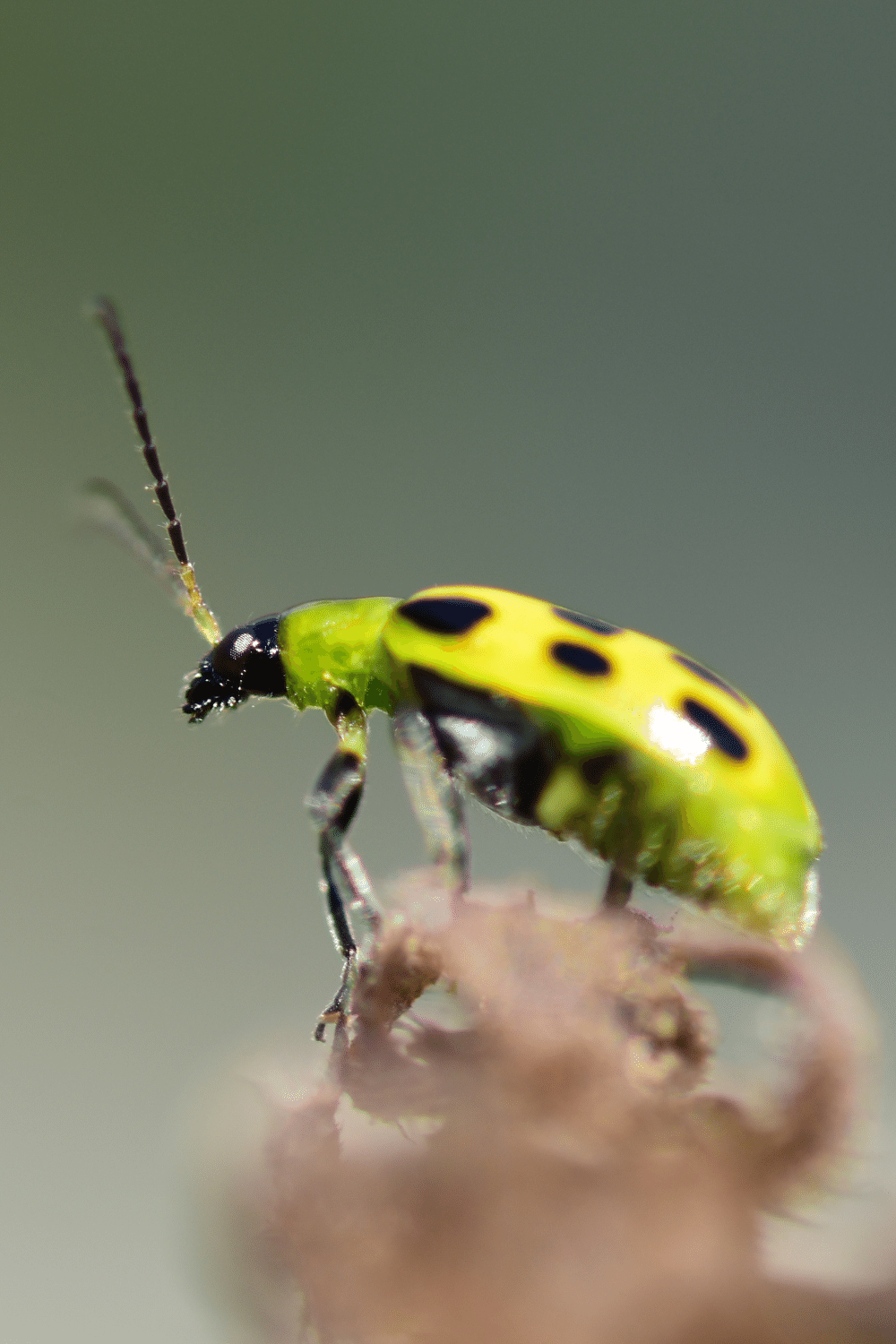
34. Termites
Termites have been around since the prehistoric era and for over 120 million years. Due to their tendency to eat into timber, floor, and even wallpapers unnoticed, they are regarded as “silent destroyers”.
It’s critical to be attentive to termite management and elimination.
- Scientific Name: Isoptera
- Size: 1/8 to an inch long
- Color: Brown or red
- Legs: Six legs
- Antennae: Straight antennae
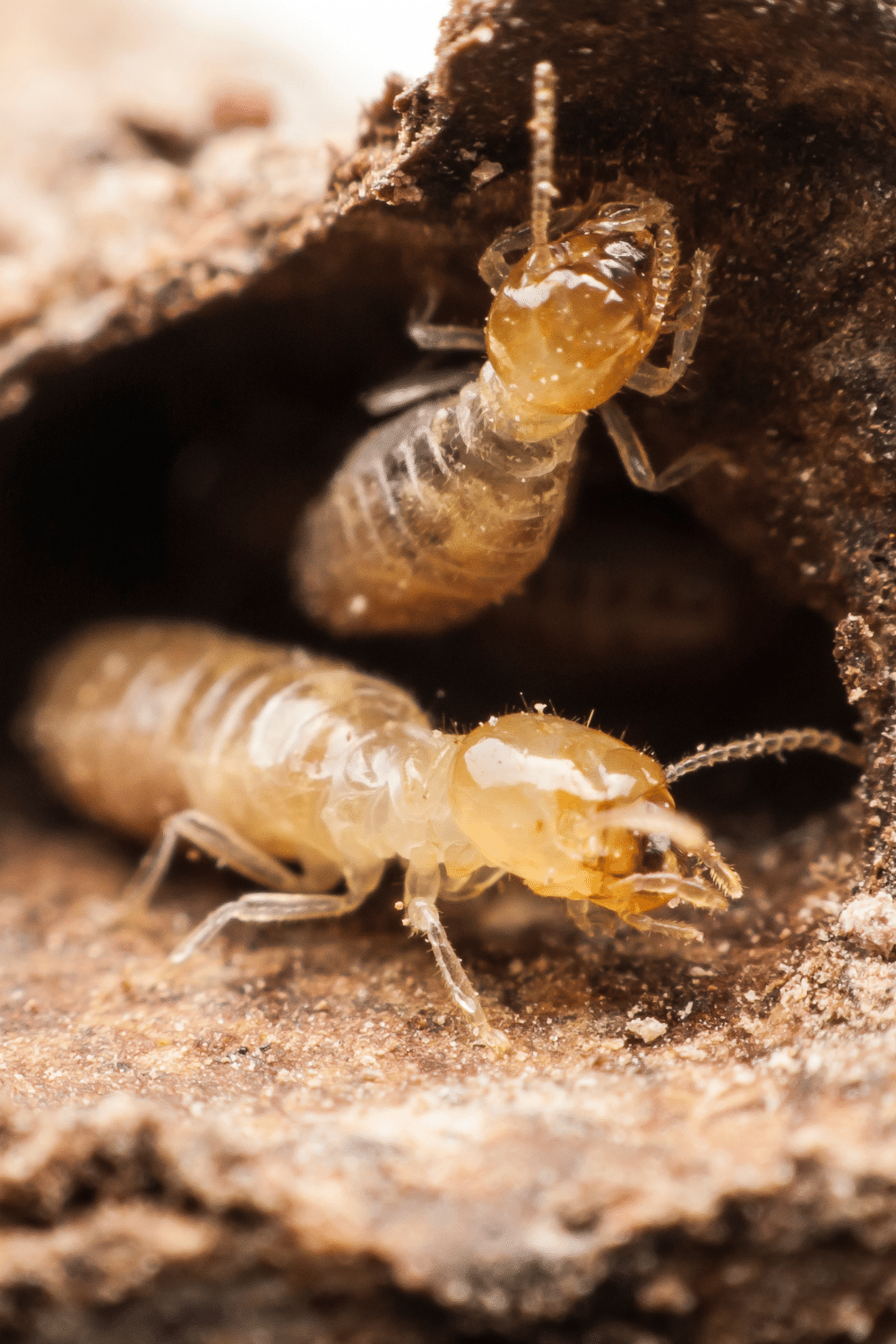
35. Cricket
Real crickets (superfamily Grylloidea) have around 2000 species throughout. Long-horned grasshoppers, basement-dwelling camel crickets, and katydids are all strongly linked.
These insects have lengthy antennae and resemble grasshoppers. Crickets are often found without wings.
- Scientific Name: Grylloidea
- Size: 0.12 to 2 inches (3 to 50 mm)
- Color: Brownish-yellow
- Shape: Cylindrical, vertically flattened
- Legs: Hind legs
- Antennae: Thin antennae
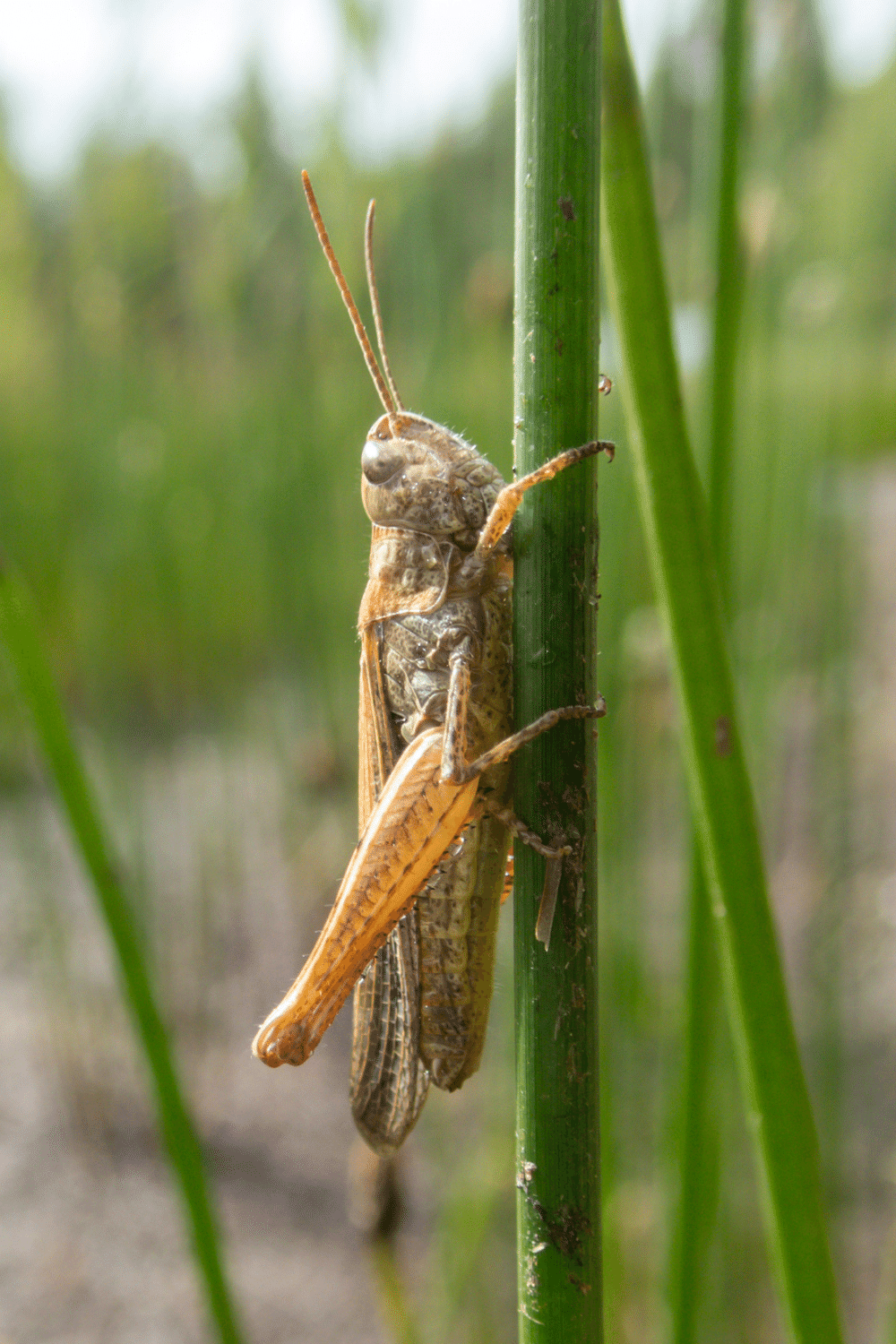
36. Squash Bug
As adults, squash bugs can survive the wintertime in protected areas such as plant waste, behind houses, or beneath stones.
When the grownups emerge in the springtime, they travel to cucurbit plants developing to feed and breed.
- Scientific Name: Anasa tristis
- Size: 5/8 inch long
- Color: Drak brown to gray
- Shape: Sheild shaped
- Legs: Black colored legs
- Antennae: 5 segmented antennae
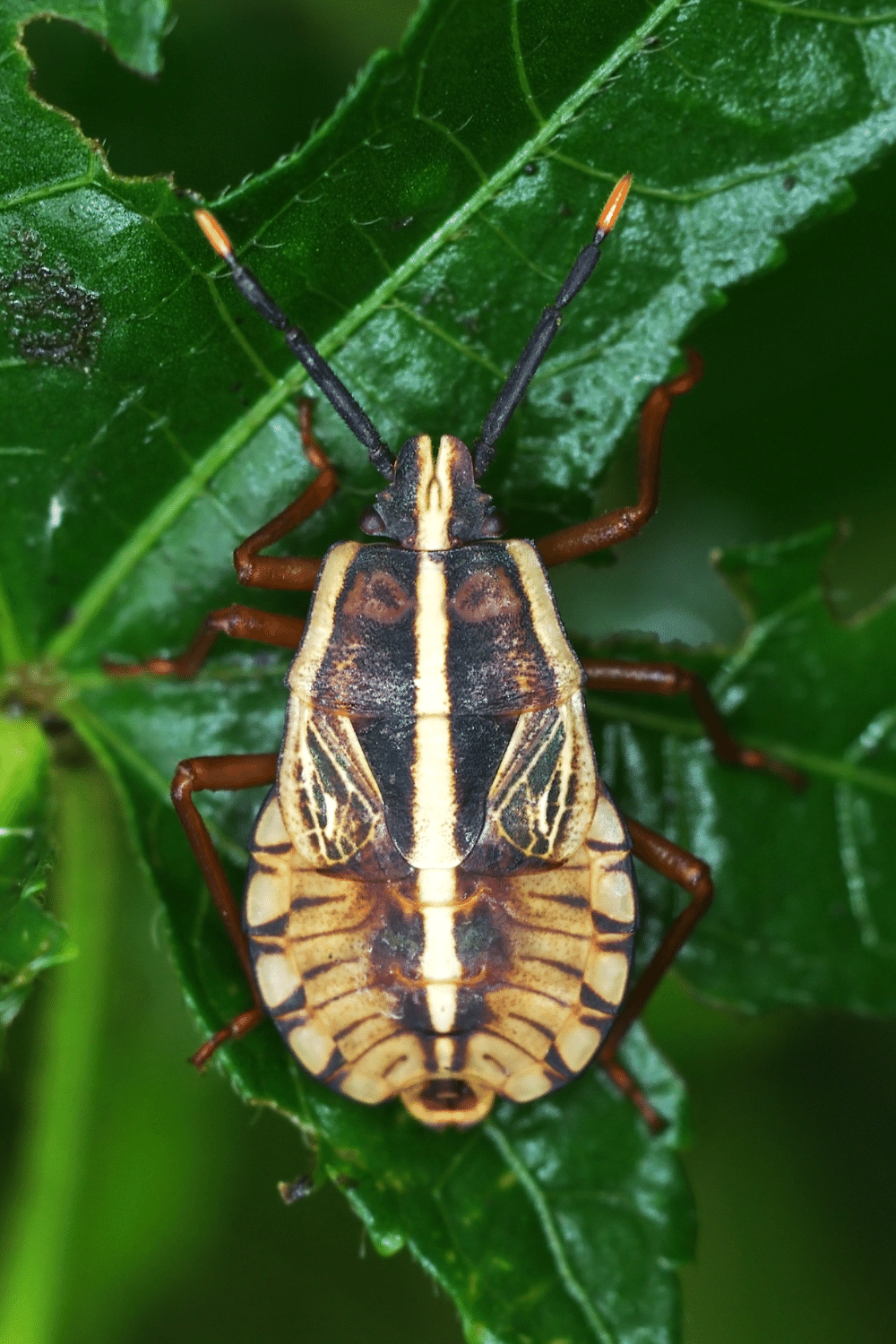
37. Chinch Bug
Chinch bugs are more common in the summer or when the weather is humid and hot. With their penetrating mouth, these pests may do a lot of harm to your turf. These mouthparts allow them to munch a variety of grasses.
Chinch bugs drain the juices from the grass stalks with their mouth. Chinch bugs secrete poison into the grass throughout this procedure, which causes it to become yellow and wilt long after they’ve been removed.
- Scientific Name: Blissus leucopterus
- Size: 0.1 to 0.14 inches (3-3.6 mm)
- Color: Adult are black and young are bright orange
- Shape: Oval and oblong
- Legs: Reddish legs
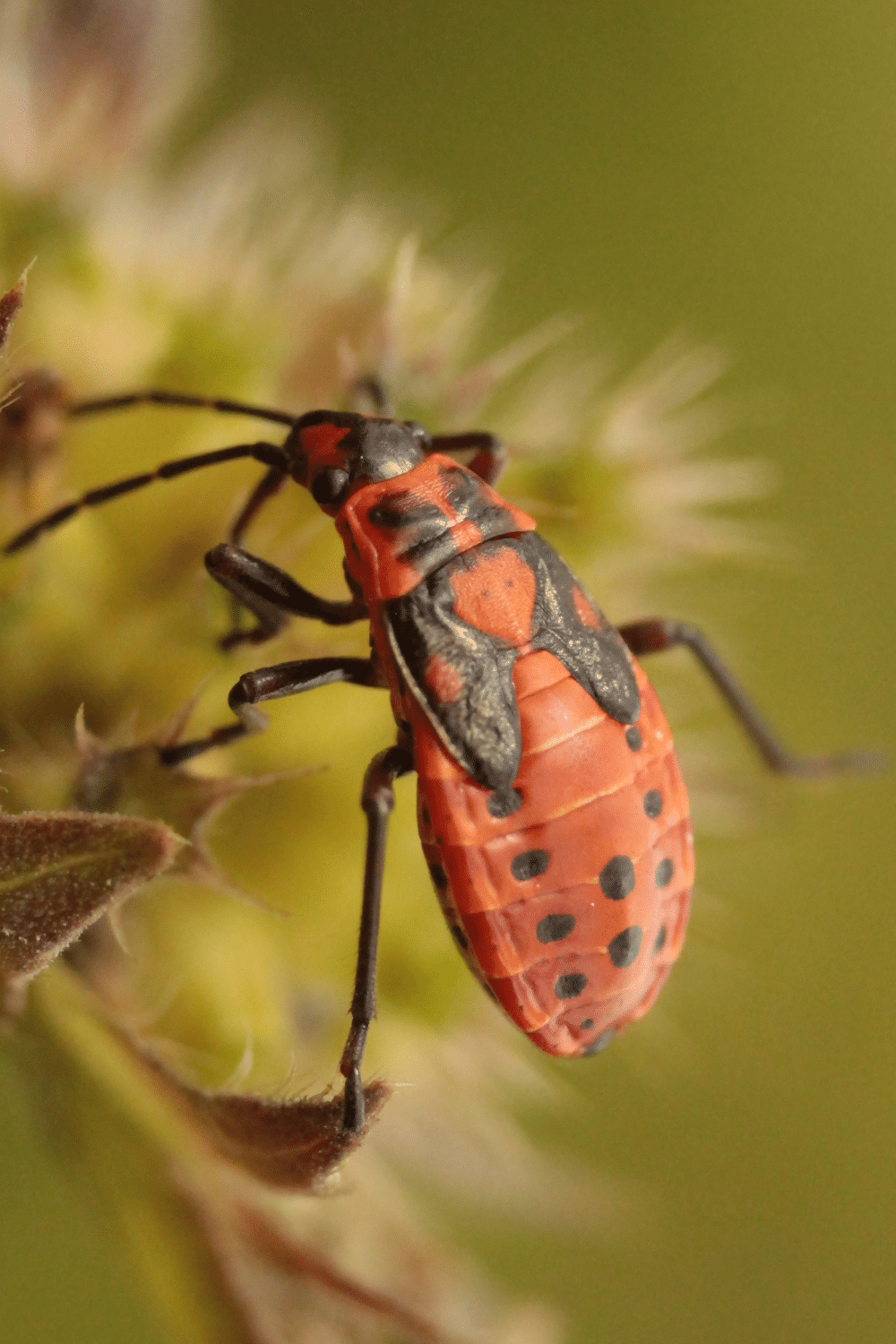
38. Sowbugs
Sowbugs are the only crustaceans that have evolved to become land-dwelling. So bugs prefer wet surroundings outside; however, they can also be found within structures.
They do not attack, bite, or spread infections, and neither do they contaminate food, fabric, or wood, even though they often come in great numbers. By appearance, they are a problem.
- Scientific Name: Oniscidea
- Size: 1/4 to ½ inches
- Color: Slate to dark gray
- Shape: Oval
- Legs: Seven pairs of legs
- Antennae: Two pairs of antennae
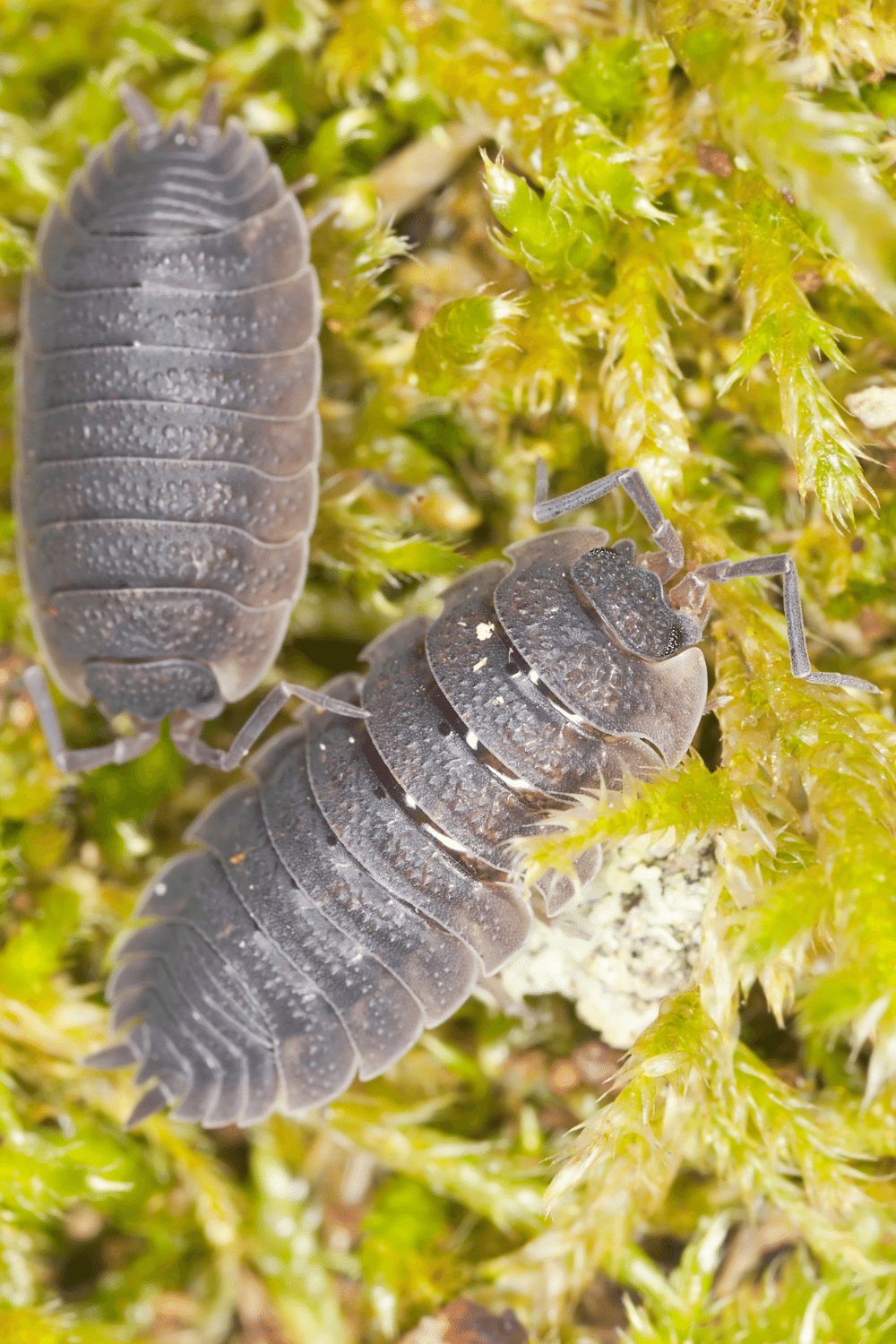
39. Whiteflies
Whiteflies are small sap-sucking bugs that can grow plentiful in vegetable and decorative crops in hot temperatures. They exude thick honeydew, which causes leaf discoloration or mortality.
When the usual biological balance is interrupted, outbreaks are common. When populations are large, management becomes challenging.
- Scientific Name: Aleyrodidae
- Size: 0.05 to 0.09 inches (1.5–2.5mm) long
- Color: White to off-white
- Shape: Oval like a pillbox
- Wings: Four wings
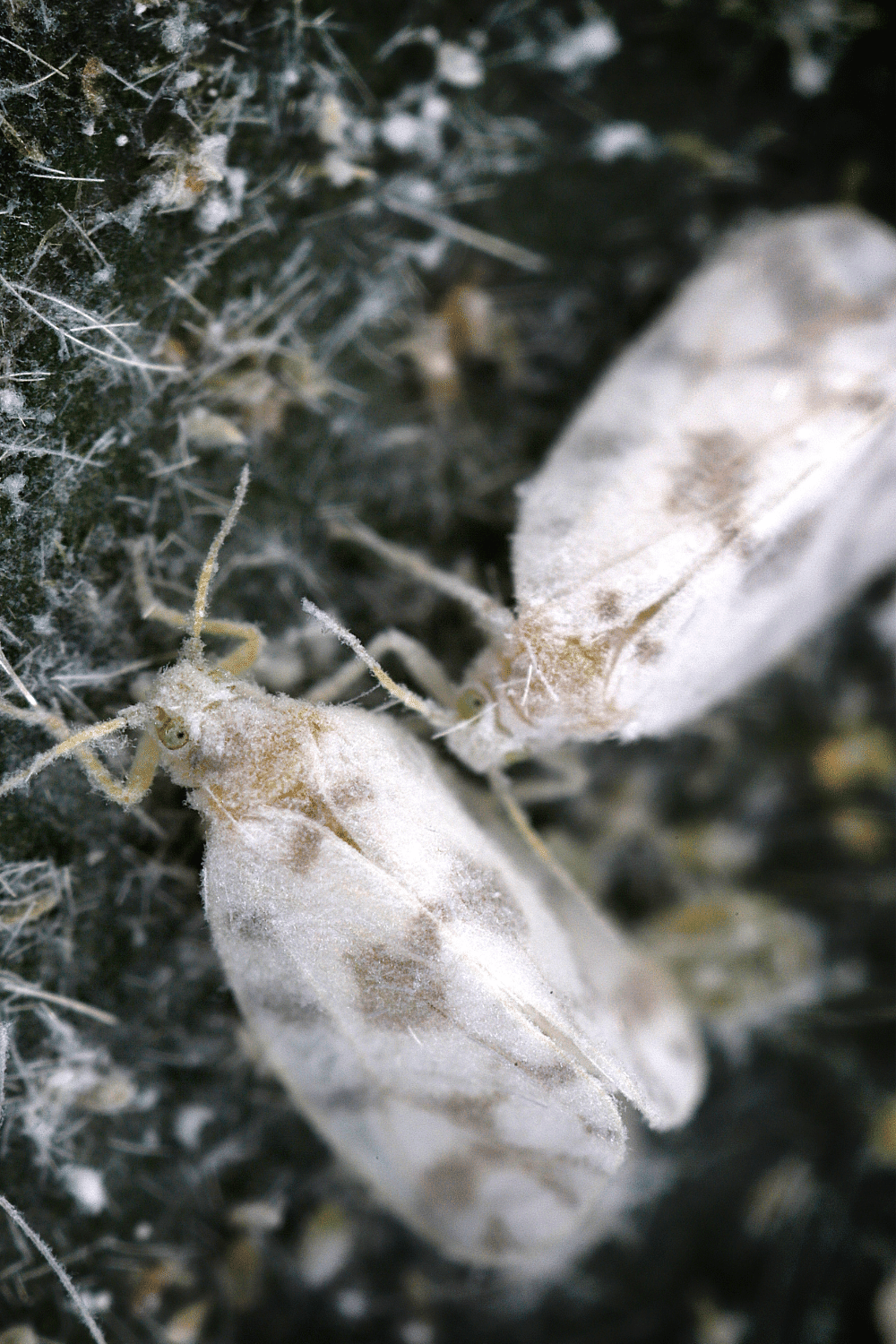
40. Kissing Bug
Kissing bugs are nocturnal, meaning they only come out to hunt in the dark. People are commonly bitten by kissing bugs while they are sleeping. The bites aren’t painful, and you might not even be aware that you’ve been bitten.
Kissing bugs sting by pumping saliva into the area that has anesthetic properties. The feeding time for the bugs is usually around 20 and 30 minutes.
- Scientific Name: Triatominae
- Size: ½ to 1 inch long
- Color: Black to dark brown
- Shape: Pear-shaped
- Legs: Six legs
- Antennae: ½ to 1 inch long antennae
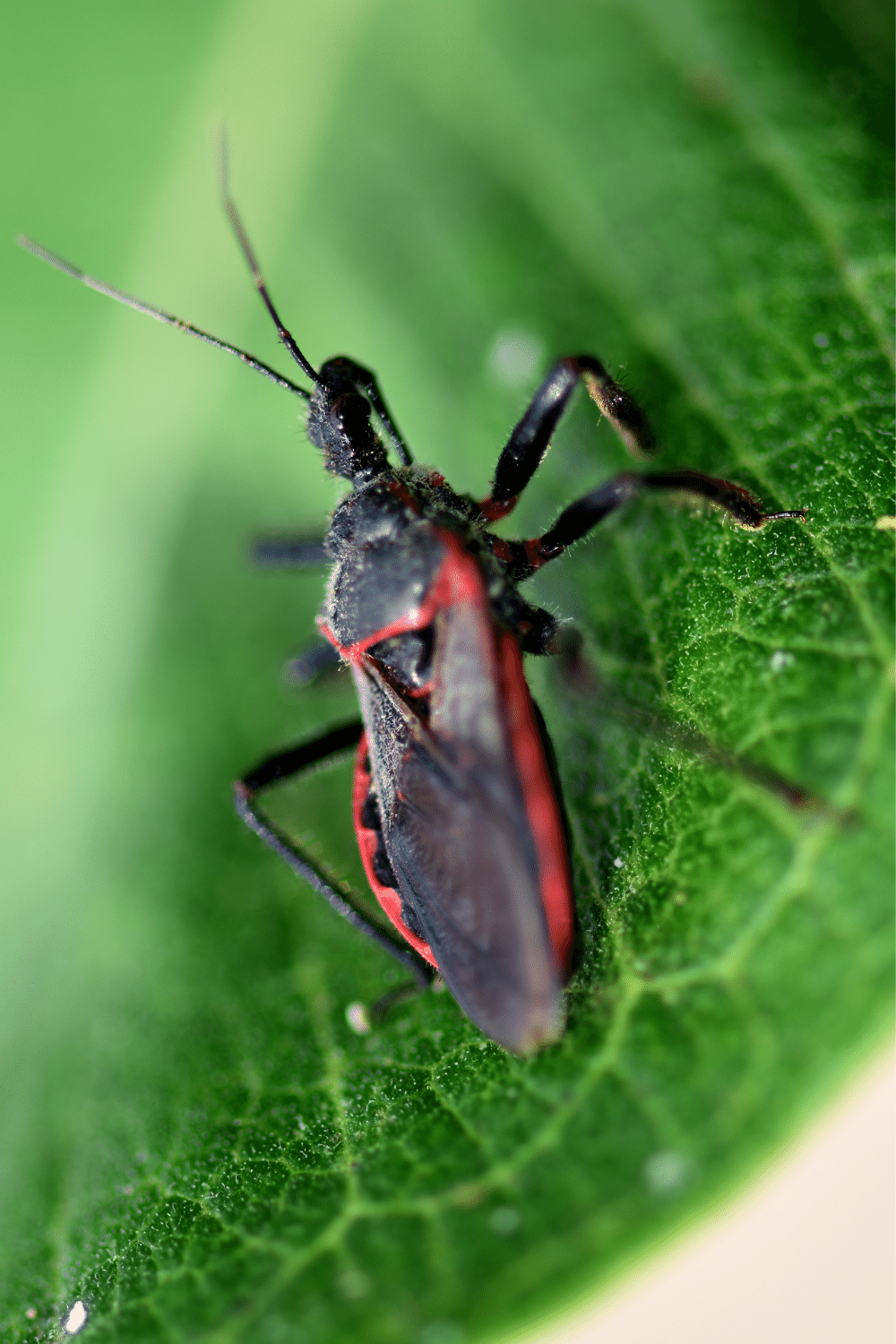
Read next: What Is This 3cm Green Caterpillar From Northern California?

